IEC 60320 C14 C15 Power Cords
IEC320 C14/C15 power cable uses.
The IEC 320 C15 Power cable is used to power electrical devices that emit so much heat (intentionally or unintentionally) that they require a power connection that can withstand more than the 70 °C (158 °F) temperature rating of the standard C13. In combination with the C14 plug type, the use cases of this high-temperature cable are almost exclusively data center environments. This cable would most likely be found supplying a High-Powered Switch power from a rack-mounted PDU power supply source. If your equipment has a IEC320 C16 Inlet it should only be mated with the matching C15-Power Connector.
Are there higher rated versions of the “kettle plug”?
There is an even higher rated version of this standard that is rated for up to 155 °C (311 °F), known as the IEC320 C15A/C16A Standard. It includes an additional notch above the ground pin that prevents the normal C15 from inserting but allows the C15A to be inserted into the C16A, C16 and C14.
Dual purpose C15 power can be “down-graded” to standard power sources.
The C15 is a high-temperature variation of the IEC 60320 C13 Standard, and has all of the ratings and safety approvals of the C13 but can withstand greater temperatures. To improve the usability and functionality of the connector, it can be “downgraded” or plugged into a standard C14 Inlet and function as a C13 connector. The C13 cannot plug into a C16 Inlet on the other hand, since it cannot be “upgraded” without posing a fire and electrical hazard. This logical engineering can be found in many different configurations of power cables and helps the user utilize the power sources available while keeping the user safe from electrical hazard and preventing fire to the best of their ability.

High Temp IEC320 C14 to IEC320 C15 15A 250V
Specifications
Countries of Certification The below list may not be a complete list of the applicable countries for this product. Contact us if you are inquiring about a specific country.
Select Color









Select Length
Need assistance? Give us a call, 860-763-2100
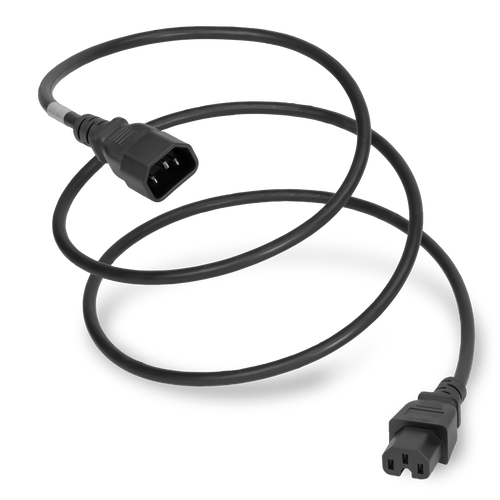
Black High Temp IEC320 C14 to IEC320 C15 10A 250V
Specifications
Countries of Certification The below list may not be a complete list of the applicable countries for this product. Contact us if you are inquiring about a specific country.
Select Length
Need assistance? Give us a call, 860-763-2100

High Temp IEC320 C14 to IEC320 C15 13A 250V
Specifications
Countries of Certification The below list may not be a complete list of the applicable countries for this product. Contact us if you are inquiring about a specific country.
Select Color



Select Length
Need assistance? Give us a call, 860-763-2100
-KK-BLK.png?w=500)
Black 15A C14 to C15 2x SPLITTER Power Cords
Specifications
Countries of Certification The below list may not be a complete list of the applicable countries for this product. Contact us if you are inquiring about a specific country.
Select Length
Need assistance? Give us a call, 860-763-2100
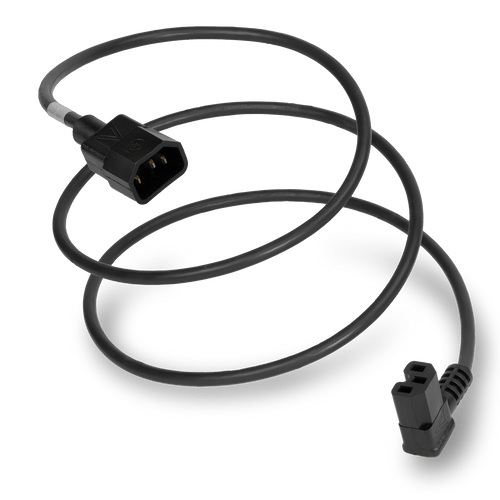
Black High Temp IEC320 C14 to IEC320 C15 Right Angle 15A 250V
Specifications
Countries of Certification The below list may not be a complete list of the applicable countries for this product. Contact us if you are inquiring about a specific country.
Select Length
Need assistance? Give us a call, 860-763-2100
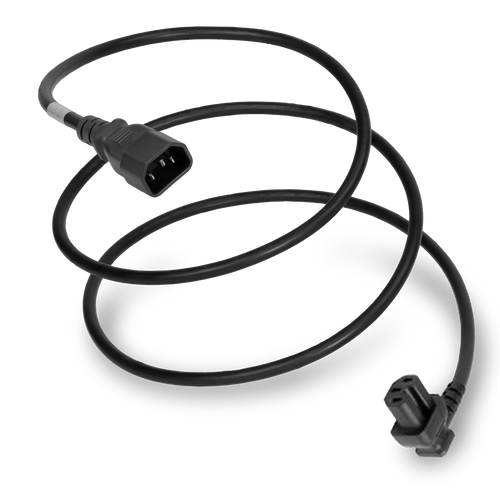
Black High Temp IEC320 C14 to IEC320 C15 Left Angle 15A 250V
Specifications
Countries of Certification The below list may not be a complete list of the applicable countries for this product. Contact us if you are inquiring about a specific country.
Select Length
Need assistance? Give us a call, 860-763-2100
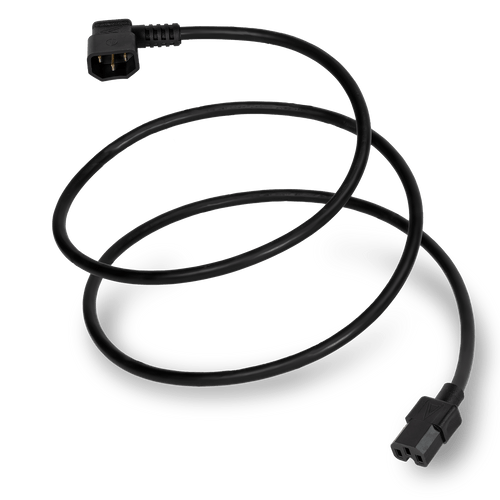
Black High Temp IEC320 C14 Right Angle to IEC320 C15 15A 250V
Specifications
Countries of Certification The below list may not be a complete list of the applicable countries for this product. Contact us if you are inquiring about a specific country.
Select Length
Need assistance? Give us a call, 860-763-2100

Black High Temp IEC320 C14 Left Angle to IEC320 C15 15A 250V
Specifications
Countries of Certification The below list may not be a complete list of the applicable countries for this product. Contact us if you are inquiring about a specific country.
Select Length
Need assistance? Give us a call, 860-763-2100
Filters
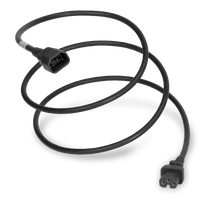 1415-A-048
1415-A-048
Global C14 to C15, 10A/250V 4FT Black Power Cord, cULus, ENEC, VDE, PSE, UKCA, CE Approvals
 1415-A-060
1415-A-060
Global C14 to C15, 10A/250V 5FT Black Power Cord, cULus, ENEC, VDE, PSE, UKCA, CE Approvals
 1415-A-072
1415-A-072
Global C14 to C15, 10A/250V 6FT Black Power Cord, cULus, ENEC, VDE, PSE, UKCA, CE Approvals
 1415-A-072-RED
1415-A-072-RED
Global C14 to C15, 10A/250V 6FT Red Power Cord, cULus, ENEC, VDE, PSE, UKCA, CE Approvals
 1415-A-084
1415-A-084
Global C14 to C15, 10A/250V 7FT Black Power Cord, cULus, ENEC, VDE, PSE, UKCA, CE Approvals
 1415-A-096
1415-A-096
Global C14 to C15, 10A/250V 8FT Black Power Cord, cULus, ENEC, VDE, PSE, UKCA, CE Approvals
| Image | Part/Description | Specifications | Availability | Pricing | Qty | |
|---|---|---|---|---|---|---|
-KK-BLK.png?w=200)
|
1415(2)-H-072
6FT Black Splitter IEC320 C14 to 2x IEC320 C15 15A 250V |
Country of Certification
United States
Mexico
Canada
Plug (Male)
IEC 60320 C14
Connector (Female)
2X IEC 60320 C15
Length
6 Feet
Color
Black
Current (Amps)
15 Amps
Voltage (Volts)
250 volts
Approvals
cUL
UL
Cordage
14awg-3c SJT
Certifications
RoHS
Number of Legs (Splitter)
2 Legs (Splitter)
Leg Length
7 inches
|
|
|||

|
1415-A-048
Global C14 to C15, 10A/250V 4FT Black Power Cord, cULus, ENEC, VDE, PSE, UKCA, CE Approvals |
Country of Certification
United States
Mexico
Canada
United Kingdom
TURKEY
Switzerland
Sweden
SPAIN
SLOVAKIA
PORTUGAL
POLAND
Norway
NETHERLANDS
Italy
HUNGARY
GREECE
Germany
France
Finland
Denmark
Czech Republic
Belgium
Austria
Germany
Japan
United Kingdom
Plug (Male)
IEC 60320 C14
Connector (Female)
IEC 60320 C15
Color
Black
Current (Amps)
10 Amps
Approvals
UKCA
cUL
ENEC
PSE
UL
VDE
Cordage
SJT 17AWG/3C+HVCTF 1.0/3C +H05VV-F 1.0MM2/3C BK+K60227 IEC 53 1.0/3G+ 60227 IEC53(RVV)300/500 1.0/3G
Certifications
RoHS
REACH
|
|
|||

|
1415-A-060
Global C14 to C15, 10A/250V 5FT Black Power Cord, cULus, ENEC, VDE, PSE, UKCA, CE Approvals |
Country of Certification
United States
Mexico
Canada
United Kingdom
TURKEY
Switzerland
Sweden
SPAIN
SLOVAKIA
PORTUGAL
POLAND
Norway
NETHERLANDS
Italy
HUNGARY
GREECE
Germany
France
Finland
Denmark
Czech Republic
Belgium
Austria
Germany
Japan
United Kingdom
Plug (Male)
IEC 60320 C14
Connector (Female)
IEC 60320 C15
Color
Black
Current (Amps)
10 Amps
Approvals
UKCA
cUL
ENEC
PSE
UL
VDE
Cordage
SJT 17AWG/3C+HVCTF 1.0/3C +H05VV-F 1.0MM2/3C BK+K60227 IEC 53 1.0/3G+ 60227 IEC53(RVV)300/500 1.0/3G
Certifications
RoHS
REACH
|
|
|||

|
1415-A-072
Global C14 to C15, 10A/250V 6FT Black Power Cord, cULus, ENEC, VDE, PSE, UKCA, CE Approvals |
Country of Certification
Canada
United States
Mexico
Germany
United Kingdom
TURKEY
Switzerland
Sweden
SPAIN
SLOVAKIA
PORTUGAL
POLAND
Norway
NETHERLANDS
Italy
HUNGARY
GREECE
Germany
France
Finland
Denmark
Czech Republic
Belgium
Austria
Japan
United States
Mexico
Canada
United Kingdom
TURKEY
Switzerland
Sweden
SPAIN
SLOVAKIA
PORTUGAL
POLAND
Norway
NETHERLANDS
Italy
HUNGARY
GREECE
Germany
France
Finland
Denmark
Czech Republic
Belgium
Austria
Germany
Japan
United Kingdom
Plug (Male)
IEC 60320 C14
Connector (Female)
IEC 60320 C13
Length
6 Feet
Color
Black
Current (Amps)
10 Amps
Approvals
UKCA
CE
cUL
cUL
ENEC
ENEC
PSE
PSE
UL
UL
VDE
VDE
Cordage
17awg SJT / 1.0mm H05VV-F -3c
Certifications
REACH
RoHS
|
|
|||

|
1415-A-072-RED
Global C14 to C15, 10A/250V 6FT Red Power Cord, cULus, ENEC, VDE, PSE, UKCA, CE Approvals |
Country of Certification
United States
Mexico
Canada
United Kingdom
TURKEY
Switzerland
Sweden
SPAIN
SLOVAKIA
PORTUGAL
POLAND
Norway
NETHERLANDS
Italy
HUNGARY
GREECE
Germany
France
Finland
Denmark
Czech Republic
Belgium
Austria
Germany
Japan
United Kingdom
Plug (Male)
IEC 60320 C14
Connector (Female)
IEC 60320 C15
Length
6 Feet
Color
Red
Current (Amps)
10 Amps
Voltage (Volts)
250 volts
Approvals
UKCA
CE
cUL
ENEC
PSE
UL
VDE
Cordage
HVCTF 3/1.0 + H05V2V2-F 3/1.0 + SJT 3/17AWG
|
|
|||

|
1415-A-084
Global C14 to C15, 10A/250V 7FT Black Power Cord, cULus, ENEC, VDE, PSE, UKCA, CE Approvals |
Country of Certification
United States
Mexico
Canada
United Kingdom
TURKEY
Switzerland
Sweden
SPAIN
SLOVAKIA
PORTUGAL
POLAND
Norway
NETHERLANDS
Italy
HUNGARY
GREECE
Germany
France
Finland
Denmark
Czech Republic
Belgium
Austria
Germany
Japan
United Kingdom
Plug (Male)
IEC 60320 C14
Connector (Female)
IEC 60320 C13
IEC 60320 C15
Color
Black
Current (Amps)
10 Amps
Approvals
UKCA
cUL
ENEC
PSE
UL
VDE
Cordage
SJT 17AWG/3C+HVCTF 1.0/3C +H05VV-F 1.0MM2/3C BK+K60227 IEC 53 1.0/3G+ 60227 IEC53(RVV)300/500 1.0/3G
Certifications
RoHS
REACH
|
|
|||

|
1415-A-096
Global C14 to C15, 10A/250V 8FT Black Power Cord, cULus, ENEC, VDE, PSE, UKCA, CE Approvals |
Country of Certification
United States
Mexico
Canada
United Kingdom
TURKEY
Switzerland
Sweden
SPAIN
SLOVAKIA
PORTUGAL
POLAND
Norway
NETHERLANDS
Italy
HUNGARY
GREECE
Germany
France
Finland
Denmark
Czech Republic
Belgium
Austria
Germany
Japan
United Kingdom
Plug (Male)
IEC 60320 C14
Connector (Female)
IEC 60320 C13
IEC 60320 C15
Color
Black
Current (Amps)
10 Amps
Approvals
UKCA
cUL
ENEC
PSE
UL
VDE
Cordage
SJT 17AWG/3C+HVCTF 1.0/3C +H05VV-F 1.0MM2/3C BK+K60227 IEC 53 1.0/3G+ 60227 IEC53(RVV)300/500 1.0/3G
Certifications
RoHS
REACH
|
|
|||
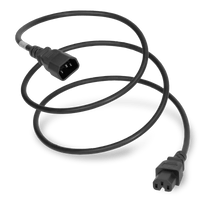
|
1415-F-012
1FT Black High Temp IEC320 C14 to IEC320 C15 10A 250V |
Country of Certification
United States
Mexico
Canada
Plug (Male)
IEC 60320 C14
Connector (Female)
IEC 60320 C15
Length
1 Foot
Color
Black
Current (Amps)
10 Amps
Voltage (Volts)
250 volts
Approvals
cUL
UL
Cordage
18awg-3c SJT
Certifications
REACH
RoHS
|
|
|||

|
1415-F-018
1.5FT Black High Temp IEC320 C14 to IEC320 C15 10A 250V |
Country of Certification
United States
Mexico
Canada
Plug (Male)
IEC 60320 C14
Connector (Female)
IEC 60320 C15
Length
1.5 Feet
Color
Black
Current (Amps)
10 Amps
Voltage (Volts)
250 volts
Approvals
cUL
UL
Cordage
18awg-3c SJT
Certifications
REACH
RoHS
|
|
|||

|
1415-F-024
2FT Black High Temp IEC320 C14 to IEC320 C15 10A 250V |
Country of Certification
United States
Mexico
Canada
Plug (Male)
IEC 60320 C14
Connector (Female)
IEC 60320 C15
Length
2 Feet
Color
Black
Current (Amps)
10 Amps
Voltage (Volts)
250 volts
Approvals
cUL
UL
Cordage
18awg-3c SJT
Certifications
REACH
RoHS
|
|
|||

|
1415-F-030
2.5FT Black High Temp IEC320 C14 to IEC320 C15 10A 250V |
Country of Certification
United States
Mexico
Canada
Plug (Male)
IEC 60320 C14
Connector (Female)
IEC 60320 C15
Length
2.5 Feet
Color
Black
Current (Amps)
10 Amps
Voltage (Volts)
250 volts
Approvals
cUL
UL
Cordage
18awg-3c SJT
Certifications
REACH
RoHS
|
|
|||

|
1415-F-036
3FT Black High Temp IEC320 C14 to IEC320 C15 10A 250V |
Country of Certification
United States
Mexico
Canada
Plug (Male)
IEC 60320 C14
Connector (Female)
IEC 60320 C15
Length
3 Feet
Color
Black
Current (Amps)
10 Amps
Voltage (Volts)
250 volts
Approvals
cUL
UL
Cordage
18awg-3c SJT
Certifications
RoHS
REACH
|
|
|||

|
1415-F-042
3.5FT Black High Temp IEC320 C14 to IEC320 C15 10A 250V |
Country of Certification
United States
Mexico
Canada
Plug (Male)
IEC 60320 C14
Connector (Female)
IEC 60320 C15
Length
3.5 Feet
Color
Black
Current (Amps)
10 Amps
Voltage (Volts)
250 volts
Approvals
cUL
UL
Cordage
18awg-3c SJT
Certifications
REACH
RoHS
|
|
|||

|
1415-F-048
4FT Black High Temp IEC320 C14 to IEC320 C15 10A 250V |
Country of Certification
United States
Mexico
Canada
Plug (Male)
IEC 60320 C14
Connector (Female)
IEC 60320 C15
Length
4 Feet
Color
Black
Current (Amps)
10 Amps
Voltage (Volts)
250 volts
Approvals
cUL
UL
Cordage
18awg-3c SJT
Certifications
RoHS
REACH
|
|
|||

|
1415-F-054
4.5FT Black High Temp IEC320 C14 to IEC320 C15 10A 250V |
Country of Certification
United States
Mexico
Canada
Plug (Male)
IEC 60320 C14
Connector (Female)
IEC 60320 C15
Length
4.5 Feet
Color
Black
Current (Amps)
10 Amps
Voltage (Volts)
250 volts
Approvals
cUL
UL
Cordage
18awg-3c SJT
Certifications
REACH
RoHS
|
|
|||

|
1415-F-060
5FT Black High Temp IEC320 C14 to IEC320 C15 10A 250V |
Country of Certification
United States
Mexico
Canada
Plug (Male)
IEC 60320 C14
Connector (Female)
IEC 60320 C15
Length
5 Feet
Color
Black
Current (Amps)
10 Amps
Voltage (Volts)
250 volts
Approvals
cUL
UL
Cordage
18awg-3c SJT
Certifications
REACH
RoHS
|
|
|||

|
1415-F-072
6FT Black High Temp IEC320 C14 to IEC320 C15 10A 250V |
Country of Certification
United States
Mexico
Canada
Plug (Male)
IEC 60320 C14
Connector (Female)
IEC 60320 C15
Length
6 Feet
Color
Black
Current (Amps)
10 Amps
Voltage (Volts)
250 volts
Approvals
cUL
UL
Cordage
18awg-3c SJT
Certifications
RoHS
REACH
|
|
|||

|
1415-F-096
8FT Black High Temp IEC320 C14 to IEC320 C15 10A 250V |
Country of Certification
United States
Mexico
Canada
Plug (Male)
IEC 60320 C14
Connector (Female)
IEC 60320 C15
Length
8 Feet
Color
Black
Current (Amps)
10 Amps
Voltage (Volts)
250 volts
Approvals
cUL
UL
Cordage
18awg-3c SJT
Certifications
RoHS
REACH
|
|
|||

|
1415-F-120
10FT Black High Temp IEC320 C14 to IEC320 C15 10A 250V |
Country of Certification
United States
Mexico
Canada
Plug (Male)
IEC 60320 C14
Connector (Female)
IEC 60320 C15
Length
10 Feet
Color
Black
Current (Amps)
10 Amps
Voltage (Volts)
250 volts
Approvals
cUL
UL
Cordage
18awg-3c SJT
Certifications
RoHS
REACH
|
|
|||

|
1415-F-180
15FT Black High Temp IEC320 C14 to IEC320 C15 10A 250V |
Country of Certification
United States
Mexico
Canada
Plug (Male)
IEC 60320 C14
Connector (Female)
IEC 60320 C15
Length
15 Feet
Color
Black
Current (Amps)
10 Amps
Voltage (Volts)
250 volts
Approvals
cUL
UL
Cordage
18awg-3c SJT
Certifications
REACH
RoHS
|
|
|||
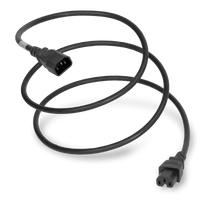
|
1415-G-024
2FT Black High Temp IEC320 C14 to IEC320 C15 13A 250V |
Country of Certification
United States
Mexico
Plug (Male)
IEC 60320 C14
Connector (Female)
IEC 60320 C15
Length
2 Feet
Color
Black
Current (Amps)
13 Amps
Voltage (Volts)
250 volts
Approvals
UL
Cordage
16awg-3c SJT
Certifications
RoHS
|
|
|||

|
1415-G-036
3FT Black High Temp IEC320 C14 to IEC320 C15 13A 250V |
Country of Certification
United States
Mexico
Plug (Male)
IEC 60320 C14
Connector (Female)
IEC 60320 C15
Length
3 Feet
Color
Black
Current (Amps)
13 Amps
Voltage (Volts)
250 volts
Approvals
UL
Cordage
16awg-3c SJT
Certifications
RoHS
|
|
|||

|
1415-G-048
4FT Black High Temp IEC320 C14 to IEC320 C15 13A 250V |
Country of Certification
United States
Mexico
Plug (Male)
IEC 60320 C14
Connector (Female)
IEC 60320 C15
Length
4 Feet
Color
Black
Current (Amps)
13 Amps
Voltage (Volts)
250 volts
Approvals
UL
Cordage
16awg-3c SJT
Certifications
RoHS
|
|
|||

|
1415-G-060
5FT Black High Temp IEC320 C14 to IEC320 C15 13A 250V |
Country of Certification
United States
Mexico
Plug (Male)
IEC 60320 C14
Connector (Female)
IEC 60320 C15
Length
5 Feet
Color
Black
Current (Amps)
13 Amps
Voltage (Volts)
250 volts
Approvals
UL
Cordage
16awg-3c SJT
Certifications
RoHS
|
|
|||
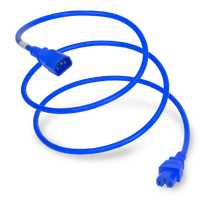
|
1415-G-060-BLU
5FT Blue High Temp IEC320 C14 to IEC320 C15 13A 250V |
Country of Certification
United States
Mexico
Plug (Male)
IEC 60320 C14
Connector (Female)
IEC 60320 C15
Length
5 Feet
Color
Blue
Current (Amps)
13 Amps
Voltage (Volts)
250 volts
Approvals
UL
Cordage
16awg-3c SJT
|
|
|||

|
1415-G-072
6FT Black High Temp IEC320 C14 to IEC320 C15 13A 250V |
Country of Certification
United States
Mexico
Plug (Male)
IEC 60320 C14
Connector (Female)
IEC 60320 C15
Length
6 Feet
Color
Black
Current (Amps)
13 Amps
Voltage (Volts)
250 volts
Approvals
UL
Cordage
16awg-3c SJT
Certifications
RoHS
|
|
|||

|
1415-G-096
8FT Black High Temp IEC320 C14 to IEC320 C15 13A 250V |
Country of Certification
United States
Mexico
Plug (Male)
IEC 60320 C14
Connector (Female)
IEC 60320 C15
Length
8 Feet
Color
Black
Current (Amps)
13 Amps
Voltage (Volts)
250 volts
Approvals
UL
Cordage
16awg-3c SJT
Certifications
RoHS
|
|
|||

|
1415-H-012
1FT Black High Temp IEC320 C14 to IEC320 C15 15A 250V |
Country of Certification
United States
Mexico
Canada
Plug (Male)
IEC 60320 C14
Connector (Female)
IEC 60320 C15
Length
1 Foot
Color
Black
Current (Amps)
15 Amps
Voltage (Volts)
250 volts
Approvals
cUL
UL
Cordage
14awg-3c SJT
Certifications
REACH
RoHS
|
|
|||

|
1415-H-012-BLU
1FT Blue High Temp IEC320 C14 to IEC320 C15 15A 250V |
Plug (Male)
IEC 60320 C14
Connector (Female)
IEC 60320 C15
Length
1 Foot
Color
Blue
Current (Amps)
15 Amps
Voltage (Volts)
250 volts
Approvals
UL, cUL
Cordage
14awg-3c SJT
Certifications
RoHS
REACH
|
|
|||

|
1415-H-012-GRN
1FT Green High Temp IEC320 C14 to IEC320 C15 15A 250V |
Plug (Male)
IEC 60320 C14
Connector (Female)
IEC 60320 C15
Length
1 Foot
Color
Green
Current (Amps)
15 Amps
Voltage (Volts)
250 volts
Approvals
UL, cUL
Cordage
14awg-3c SJT
Certifications
RoHS, REACH
|
|
|||
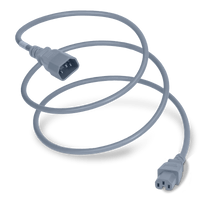
|
1415-H-012-GRY
1FT Gray High Temp IEC320 C14 to IEC320 C15 15A 250V |
Plug (Male)
IEC 60320 C14
Connector (Female)
IEC 60320 C15
Length
1 Foot
Color
Gray
Current (Amps)
15 Amps
Voltage (Volts)
250 volts
Approvals
UL, cUL
Cordage
14awg-3c SJT
Certifications
RoHS, REACH
|
|
|||

|
1415-H-012-ORG
1FT Orange High Temp IEC320 C14 to IEC320 C15 15A 250V |
Country of Certification
United States
Mexico
Canada
Plug (Male)
IEC 60320 C14
Connector (Female)
IEC 60320 C15
Length
1 Foot
Color
Orange
Current (Amps)
15 Amps
Voltage (Volts)
250 volts
Approvals
cUL
UL
Cordage
14awg-3c SJT
Certifications
REACH
RoHS
|
|
|||
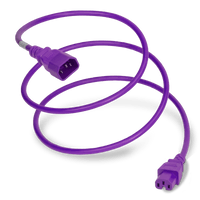
|
1415-H-012-PUR
1FT Purple High Temp IEC320 C14 to IEC320 C15 15A 250V |
Country of Certification
United States
Mexico
Canada
Plug (Male)
IEC 60320 C14
Connector (Female)
IEC 60320 C15
Length
1 Foot
Color
Purple
Current (Amps)
15 Amps
Voltage (Volts)
250 volts
Approvals
cUL
UL
Cordage
14awg-3c SJT
Certifications
REACH
RoHS
|
|
|||

|
1415-H-012-RED
1FT Red High Temp IEC320 C14 to IEC320 C15 15A 250V |
Plug (Male)
IEC 60320 C14
Connector (Female)
IEC 60320 C15
Length
1 Foot
Color
Red
Current (Amps)
15 Amps
Voltage (Volts)
250 volts
Approvals
UL, cUL
Cordage
14awg-3c SJT
Certifications
RoHS
REACH
|
|
|||

|
1415-H-012-WHT
1FT White High Temp IEC320 C14 to IEC320 C15 15A 250V |
Country of Certification
United States
Mexico
Canada
Plug (Male)
IEC 60320 C14
Connector (Female)
IEC 60320 C15
Length
1 Foot
Color
White
Current (Amps)
15 Amps
Voltage (Volts)
250 volts
Approvals
cUL
UL
Cordage
14awg-3c SJT
Certifications
RoHS, REACH
|
|
|||
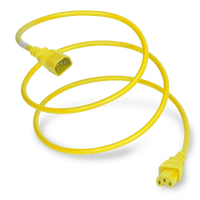
|
1415-H-012-YEL
1FT Yellow High Temp IEC320 C14 to IEC320 C15 15A 250V |
Plug (Male)
IEC 60320 C14
Connector (Female)
IEC 60320 C15
Length
1 Foot
Color
Yellow
Current (Amps)
15 Amps
Voltage (Volts)
250 volts
Approvals
UL, cUL
Cordage
14awg-3c SJT
Certifications
RoHS
REACH
|
|
|||

|
1415-H-018
1.5FT Black High Temp IEC320 C14 to IEC320 C15 15A 250V |
Country of Certification
United States
Mexico
Canada
Plug (Male)
IEC 60320 C14
Connector (Female)
IEC 60320 C15
Length
1.5 Feet
Color
Black
Current (Amps)
15 Amps
Voltage (Volts)
250 volts
Approvals
cUL
UL
Cordage
14awg-3c SJT
Certifications
REACH
RoHS
|
|
|||

|
1415-H-024
2FT Black High Temp IEC320 C14 to IEC320 C15 15A 250V |
Country of Certification
United States
Mexico
Canada
Plug (Male)
IEC 60320 C14
Connector (Female)
IEC 60320 C15
Length
2 Feet
Color
Black
Current (Amps)
15 Amps
Voltage (Volts)
250 volts
Approvals
cUL
UL
Cordage
14awg-3c SJT
Certifications
REACH
RoHS
|
|
|||

|
1415-H-024-BLU
2FT Blue High Temp IEC320 C14 to IEC320 C15 15A 250V |
Plug (Male)
IEC 60320 C14
Connector (Female)
IEC 60320 C15
Length
2 Feet
Color
Blue
Current (Amps)
15 Amps
Voltage (Volts)
250 volts
Approvals
UL, cUL
Cordage
14awg-3c SJT
Certifications
RoHS
REACH
|
|
|||

|
1415-H-024-GRN
2FT Green High Temp IEC320 C14 to IEC320 C15 15A 250V |
Plug (Male)
IEC 60320 C14
Connector (Female)
IEC 60320 C15
Length
2 Feet
Color
Green
Current (Amps)
15 Amps
Voltage (Volts)
250 volts
Approvals
UL, cUL
Cordage
14awg-3c SJT
Certifications
RoHS, REACH
|
|
|||

|
1415-H-024-GRY
2FT Gray High Temp IEC320 C14 to IEC320 C15 15A 250V |
Plug (Male)
IEC 60320 C14
Connector (Female)
IEC 60320 C15
Length
2 Feet
Color
Gray
Current (Amps)
15 Amps
Voltage (Volts)
250 volts
Approvals
UL, cUL
Cordage
14awg-3c SJT
Certifications
RoHS, REACH
|
|
|||

|
1415-H-024-ORG
2FT Orange High Temp IEC320 C14 to IEC320 C15 15A 250V |
Country of Certification
United States
Mexico
Canada
Plug (Male)
IEC 60320 C14
Connector (Female)
IEC 60320 C15
Length
2 Feet
Color
Orange
Current (Amps)
15 Amps
Voltage (Volts)
250 volts
Approvals
cUL
UL
Cordage
14awg-3c SJT
Certifications
REACH
RoHS
|
|
|||

|
1415-H-024-PUR
2FT Purple High Temp IEC320 C14 to IEC320 C15 15A 250V |
Country of Certification
United States
Mexico
Canada
Plug (Male)
IEC 60320 C14
Connector (Female)
IEC 60320 C15
Length
2 Feet
Color
Purple
Current (Amps)
15 Amps
Voltage (Volts)
250 volts
Approvals
cUL
UL
Cordage
14awg-3c SJT
Certifications
REACH
RoHS
|
|
|||

|
1415-H-024-RED
2FT Red High Temp IEC320 C14 to IEC320 C15 15A 250V |
Plug (Male)
IEC 60320 C14
Connector (Female)
IEC 60320 C15
Length
2 Feet
Color
Red
Current (Amps)
15 Amps
Voltage (Volts)
250 volts
Approvals
UL, cUL
Cordage
14awg-3c SJT
Certifications
RoHS
REACH
|
|
|||

|
1415-H-024-WHT
2FT White High Temp IEC320 C14 to IEC320 C15 15A 250V |
Country of Certification
United States
Mexico
Canada
Plug (Male)
IEC 60320 C14
Connector (Female)
IEC 60320 C15
Length
2 Feet
Color
White
Current (Amps)
15 Amps
Voltage (Volts)
250 volts
Approvals
cUL
UL
Cordage
14awg-3c SJT
Certifications
RoHS, REACH
|
|
|||

|
1415-H-024-YEL
2FT Yellow High Temp IEC320 C14 to IEC320 C15 15A 250V |
Plug (Male)
IEC 60320 C14
Connector (Female)
IEC 60320 C15
Length
2 Feet
Color
Yellow
Current (Amps)
15 Amps
Voltage (Volts)
250 volts
Approvals
UL, cUL
Cordage
14awg-3c SJT
Certifications
RoHS
REACH
|
|
|||

|
1415-H-036
3FT Black High Temp IEC320 C14 to IEC320 C15 15A 250V |
Country of Certification
United States
Mexico
Canada
Plug (Male)
IEC 60320 C14
Connector (Female)
IEC 60320 C15
Length
3 Feet
Color
Black
Current (Amps)
15 Amps
Voltage (Volts)
250 volts
Approvals
cUL
UL
Cordage
14awg-3c SJT
Certifications
RoHS
REACH
|
|
|||

|
1415-H-036-BLU
3FT Blue High Temp IEC320 C14 to IEC320 C15 15A 250V |
Plug (Male)
IEC 60320 C14
Connector (Female)
IEC 60320 C15
Length
3 Feet
Color
Blue
Current (Amps)
15 Amps
Voltage (Volts)
250 volts
Approvals
UL, cUL
Cordage
14awg-3c SJT
Certifications
REACH
RoHS
|
|
|||

|
1415-H-036-GRN
3FT Green High Temp IEC320 C14 to IEC320 C15 15A 250V |
Plug (Male)
IEC 60320 C14
Connector (Female)
IEC 60320 C15
Length
3 Feet
Color
Green
Current (Amps)
15 Amps
Voltage (Volts)
250 volts
Approvals
UL, cUL
Cordage
14awg-3c SJT
Certifications
RoHS, REACH
|
|
|||

|
1415-H-036-GRY
3FT Gray High Temp IEC320 C14 to IEC320 C15 15A 250V |
Plug (Male)
IEC 60320 C14
Connector (Female)
IEC 60320 C15
Length
3 Feet
Color
Gray
Current (Amps)
15 Amps
Voltage (Volts)
250 volts
Approvals
UL, cUL
Cordage
14awg-3c SJT
Certifications
RoHS, REACH
|
|
|||

|
1415-H-036-ORG
3FT Orange High Temp IEC320 C14 to IEC320 C15 15A 250V |
Country of Certification
United States
Mexico
Canada
Plug (Male)
IEC 60320 C14
Connector (Female)
IEC 60320 C15
Length
3 Feet
Color
Orange
Current (Amps)
15 Amps
Voltage (Volts)
250 volts
Approvals
cUL
UL
Cordage
14awg-3c SJT
Certifications
RoHS
REACH
|
|
|||

|
1415-H-036-PUR
3FT Purple High Temp IEC320 C14 to IEC320 C15 15A 250V |
Country of Certification
United States
Mexico
Canada
Plug (Male)
IEC 60320 C14
Connector (Female)
IEC 60320 C15
Length
3 Feet
Color
Purple
Current (Amps)
15 Amps
Voltage (Volts)
250 volts
Approvals
cUL
UL
Cordage
14awg-3c SJT
Certifications
RoHS
REACH
|
|
|||

|
1415-H-036-RED
3FT Red High Temp IEC320 C14 to IEC320 C15 15A 250V |
Plug (Male)
IEC 60320 C14
Connector (Female)
IEC 60320 C15
Length
3 Feet
Color
Red
Current (Amps)
15 Amps
Voltage (Volts)
250 volts
Approvals
UL, cUL
Cordage
14awg-3c SJT
Certifications
REACH
RoHS
|
|
|||

|
1415-H-036-WHT
3FT White High Temp IEC320 C14 to IEC320 C15 15A 250V |
Country of Certification
United States
Mexico
Canada
Plug (Male)
IEC 60320 C14
Connector (Female)
IEC 60320 C15
Length
3 Feet
Color
White
Current (Amps)
15 Amps
Voltage (Volts)
250 volts
Approvals
cUL
UL
Cordage
14awg-3c SJT
Certifications
RoHS, REACH
|
|
|||

|
1415-H-036-YEL
3FT Yellow High Temp IEC320 C14 to IEC320 C15 15A 250V |
Plug (Male)
IEC 60320 C14
Connector (Female)
IEC 60320 C15
Length
3 Feet
Color
Yellow
Current (Amps)
15 Amps
Voltage (Volts)
250 volts
Approvals
UL, cUL
Cordage
14awg-3c SJT
Certifications
REACH
RoHS
|
|
|||

|
1415-H-048
4FT Black High Temp IEC320 C14 to IEC320 C15 15A 250V |
Country of Certification
United States
Mexico
Canada
Plug (Male)
IEC 60320 C14
Connector (Female)
IEC 60320 C15
Length
4 Feet
Color
Black
Current (Amps)
15 Amps
Voltage (Volts)
250 volts
Approvals
cUL
UL
Cordage
14awg-3c SJT
Certifications
RoHS
REACH
|
|
|||

|
1415-H-048-BLU
4FT Blue High Temp IEC320 C14 to IEC320 C15 15A 250V |
Plug (Male)
IEC 60320 C14
Connector (Female)
IEC 60320 C15
Length
4 Feet
Color
Blue
Current (Amps)
15 Amps
Voltage (Volts)
250 volts
Approvals
UL, cUL
Cordage
14awg-3c SJT
Certifications
REACH
RoHS
|
|
|||

|
1415-H-048-GRN
4FT Green High Temp IEC320 C14 to IEC320 C15 15A 250V |
Plug (Male)
IEC 60320 C14
Connector (Female)
IEC 60320 C15
Length
4 Feet
Color
Green
Current (Amps)
15 Amps
Voltage (Volts)
250 volts
Approvals
UL, cUL
Cordage
14awg-3c SJT
Certifications
RoHS, REACH
|
|
|||

|
1415-H-048-GRY
4FT Gray High Temp IEC320 C14 to IEC320 C15 15A 250V |
Plug (Male)
IEC 60320 C14
Connector (Female)
IEC 60320 C15
Length
4 Feet
Color
Gray
Current (Amps)
15 Amps
Voltage (Volts)
250 volts
Approvals
UL, cUL
Cordage
14awg-3c SJT
Certifications
RoHS, REACH
|
|
|||

|
1415-H-048-ORG
4FT Orange High Temp IEC320 C14 to IEC320 C15 15A 250V |
Country of Certification
United States
Mexico
Canada
Plug (Male)
IEC 60320 C14
Connector (Female)
IEC 60320 C15
Length
4 Feet
Color
Orange
Current (Amps)
15 Amps
Voltage (Volts)
250 volts
Approvals
cUL
UL
Cordage
14awg-3c SJT
Certifications
RoHS
REACH
|
|
|||

|
1415-H-048-PUR
4FT Purple High Temp IEC320 C14 to IEC320 C15 15A 250V |
Country of Certification
United States
Mexico
Canada
Plug (Male)
IEC 60320 C14
Connector (Female)
IEC 60320 C15
Length
4 Feet
Color
Purple
Current (Amps)
15 Amps
Voltage (Volts)
250 volts
Approvals
cUL
UL
Cordage
14awg-3c SJT
Certifications
RoHS
REACH
|
|
|||

|
1415-H-048-RED
4FT Red High Temp IEC320 C14 to IEC320 C15 15A 250V |
Plug (Male)
IEC 60320 C14
Connector (Female)
IEC 60320 C15
Length
4 Feet
Color
Red
Current (Amps)
15 Amps
Voltage (Volts)
250 volts
Approvals
UL, cUL
Cordage
14awg-3c SJT
Certifications
REACH
RoHS
|
|
|||

|
1415-H-048-WHT
4FT White High Temp IEC320 C14 to IEC320 C15 15A 250V |
Country of Certification
United States
Mexico
Canada
Plug (Male)
IEC 60320 C14
Connector (Female)
IEC 60320 C15
Length
4 Feet
Color
White
Current (Amps)
15 Amps
Voltage (Volts)
250 volts
Approvals
cUL
UL
Cordage
14awg-3c SJT
Certifications
RoHS, REACH
|
|
|||

|
1415-H-048-YEL
4FT Yellow High Temp IEC320 C14 to IEC320 C15 15A 250V |
Plug (Male)
IEC 60320 C14
Connector (Female)
IEC 60320 C15
Length
4 Feet
Color
Yellow
Current (Amps)
15 Amps
Voltage (Volts)
250 volts
Approvals
UL, cUL
Cordage
14awg-3c SJT
Certifications
REACH
RoHS
|
|
|||

|
1415-H-060
5FT Black High Temp IEC320 C14 to IEC320 C15 15A 250V |
Country of Certification
United States
Mexico
Canada
Plug (Male)
IEC 60320 C14
Connector (Female)
IEC 60320 C15
Length
5 Feet
Color
Black
Current (Amps)
15 Amps
Voltage (Volts)
250 volts
Approvals
cUL
UL
Cordage
14awg-3c SJT
Certifications
REACH
RoHS
|
|
|||

|
1415-H-060-BLU
5FT Blue High Temp IEC320 C14 to IEC320 C15 15A 250V |
Country of Certification
United States
Mexico
Canada
Plug (Male)
IEC 60320 C14
Connector (Female)
IEC 60320 C15
Length
5 Feet
Color
Blue
Current (Amps)
15 Amps
Voltage (Volts)
250 volts
Approvals
cUL
UL, cUL
UL
Cordage
14awg-3c SJT
Certifications
RoHS
REACH
|
|
|||

|
1415-H-060-GRN
5FT Green High Temp IEC320 C14 to IEC320 C15 15A 250V |
Plug (Male)
IEC 60320 C14
Connector (Female)
IEC 60320 C15
Length
5 Feet
Color
Green
Current (Amps)
15 Amps
Voltage (Volts)
250 volts
Approvals
UL, cUL
Cordage
14awg-3c SJT
Certifications
RoHS, REACH
|
|
|||

|
1415-H-060-GRY
5FT Gray High Temp IEC320 C14 to IEC320 C15 15A 250V |
Plug (Male)
IEC 60320 C14
Connector (Female)
IEC 60320 C15
Length
5 Feet
Color
Gray
Current (Amps)
15 Amps
Voltage (Volts)
250 volts
Approvals
UL, cUL
Cordage
14awg-3c SJT
Certifications
RoHS, REACH
|
|
|||

|
1415-H-060-ORG
5FT Orange High Temp IEC320 C14 to IEC320 C15 15A 250V |
Country of Certification
United States
Mexico
Canada
Plug (Male)
IEC 60320 C14
Connector (Female)
IEC 60320 C15
Length
5 Feet
Color
Orange
Current (Amps)
15 Amps
Voltage (Volts)
250 volts
Approvals
cUL
UL
Cordage
14awg-3c SJT
Certifications
REACH
RoHS
|
|
|||

|
1415-H-060-PUR
5FT Purple High Temp IEC320 C14 to IEC320 C15 15A 250V |
Country of Certification
United States
Mexico
Canada
Plug (Male)
IEC 60320 C14
Connector (Female)
IEC 60320 C15
Length
5 Feet
Color
Purple
Current (Amps)
15 Amps
Voltage (Volts)
250 volts
Approvals
cUL
UL
Cordage
14awg-3c SJT
Certifications
REACH
RoHS
|
|
|||

|
1415-H-060-RED
5FT Red High Temp IEC320 C14 to IEC320 C15 15A 250V |
Plug (Male)
IEC 60320 C14
Connector (Female)
IEC 60320 C15
Length
5 Feet
Color
Red
Current (Amps)
15 Amps
Voltage (Volts)
250 volts
Approvals
UL, cUL
Cordage
14awg-3c SJT
Certifications
RoHS
REACH
|
|
|||

|
1415-H-060-WHT
5FT White High Temp IEC320 C14 to IEC320 C15 15A 250V |
Country of Certification
United States
Mexico
Canada
Plug (Male)
IEC 60320 C14
Connector (Female)
IEC 60320 C15
Length
5 Feet
Color
White
Current (Amps)
15 Amps
Voltage (Volts)
250 volts
Approvals
cUL
UL
Cordage
14awg-3c SJT
Certifications
RoHS, REACH
|
|
|||

|
1415-H-060-YEL
5FT Yellow High Temp IEC320 C14 to IEC320 C15 15A 250V |
Plug (Male)
IEC 60320 C14
Connector (Female)
IEC 60320 C15
Length
5 Feet
Color
Yellow
Current (Amps)
15 Amps
Voltage (Volts)
250 volts
Approvals
UL, cUL
Cordage
14awg-3c SJT
Certifications
RoHS
REACH
|
|
|||

|
1415-H-072
6FT Black High Temp IEC320 C14 to IEC320 C15 15A 250V |
Country of Certification
United States
Mexico
Canada
Plug (Male)
IEC 60320 C14
Connector (Female)
IEC 60320 C15
Length
6 Feet
Color
Black
Current (Amps)
15 Amps
Voltage (Volts)
250 volts
Approvals
cUL
UL
Cordage
14awg-3c SJT
Certifications
RoHS
REACH
|
|
|||

|
1415-H-072-BLU
6FT Blue High Temp IEC320 C14 to IEC320 C15 15A 250V |
Plug (Male)
IEC 60320 C14
Connector (Female)
IEC 60320 C15
Length
6 Feet
Color
Blue
Current (Amps)
15 Amps
Voltage (Volts)
250 volts
Approvals
UL, cUL
Cordage
14awg-3c SJT
Certifications
REACH
RoHS
|
|
|||

|
1415-H-072-GRN
6FT Green High Temp IEC320 C14 to IEC320 C15 15A 250V |
Plug (Male)
IEC 60320 C14
Connector (Female)
IEC 60320 C15
Length
6 Feet
Color
Green
Current (Amps)
15 Amps
Voltage (Volts)
250 volts
Approvals
UL, cUL
Cordage
14awg-3c SJT
Certifications
RoHS, REACH
|
|
|||

|
1415-H-072-GRY
6FT Gray High Temp IEC320 C14 to IEC320 C15 15A 250V |
Plug (Male)
IEC 60320 C14
Connector (Female)
IEC 60320 C15
Length
6 Feet
Color
Gray
Current (Amps)
15 Amps
Voltage (Volts)
250 volts
Approvals
UL, cUL
Cordage
14awg-3c SJT
Certifications
RoHS, REACH
|
|
|||

|
1415-H-072-ORG
6FT Orange High Temp IEC320 C14 to IEC320 C15 15A 250V |
Country of Certification
United States
Mexico
Canada
Plug (Male)
IEC 60320 C14
Connector (Female)
IEC 60320 C15
Length
6 Feet
Color
Orange
Current (Amps)
15 Amps
Voltage (Volts)
250 volts
Approvals
cUL
UL
Cordage
14awg-3c SJT
Certifications
RoHS
REACH
|
|
|||

|
1415-H-072-PUR
6FT Purple High Temp IEC320 C14 to IEC320 C15 15A 250V |
Country of Certification
United States
Mexico
Canada
Plug (Male)
IEC 60320 C14
Connector (Female)
IEC 60320 C15
Length
6 Feet
Color
Purple
Current (Amps)
15 Amps
Voltage (Volts)
250 volts
Approvals
cUL
UL
Cordage
14awg-3c SJT
Certifications
RoHS
REACH
|
|
|||

|
1415-H-072-RED
6FT Red High Temp IEC320 C14 to IEC320 C15 15A 250V |
Plug (Male)
IEC 60320 C14
Connector (Female)
IEC 60320 C15
Length
6 Feet
Color
Red
Current (Amps)
15 Amps
Voltage (Volts)
250 volts
Approvals
UL, cUL
Cordage
14awg-3c SJT
Certifications
REACH
RoHS
|
|
|||

|
1415-H-072-WHT
6FT White High Temp IEC320 C14 to IEC320 C15 15A 250V |
Country of Certification
United States
Mexico
Canada
Plug (Male)
IEC 60320 C14
Connector (Female)
IEC 60320 C15
Length
6 Feet
Color
White
Current (Amps)
15 Amps
Voltage (Volts)
250 volts
Approvals
cUL
UL
Cordage
14awg-3c SJT
Certifications
RoHS, REACH
|
|
|||

|
1415-H-072-YEL
6FT Yellow High Temp IEC320 C14 to IEC320 C15 15A 250V |
Country of Certification
United States
Mexico
Canada
Plug (Male)
IEC 60320 C14
Connector (Female)
IEC 60320 C15
Length
6 Feet
Color
Yellow
Current (Amps)
15 Amps
Voltage (Volts)
250 volts
Approvals
cUL
UL
Cordage
14awg-3c SJT
Certifications
RoHS
REACH
|
|
|||

|
1415-H-084
7FT Black High Temp IEC320 C14 to IEC320 C15 15A 250V |
Country of Certification
United States
Mexico
Canada
Plug (Male)
IEC 60320 C14
Connector (Female)
IEC 60320 C15
Length
7 Feet
Color
Black
Current (Amps)
15 Amps
Voltage (Volts)
250 volts
Approvals
cUL
UL
Cordage
14awg-3c SJT
Certifications
RoHS
REACH
|
|
|||

|
1415-H-084-BLU
7FT Blue High Temp IEC320 C14 to IEC320 C15 15A 250V |
Plug (Male)
IEC 60320 C14
Connector (Female)
IEC 60320 C15
Length
7 Feet
Color
Blue
Current (Amps)
15 Amps
Cordage
14awg-3c SJT
|
|
|||

|
1415-H-084-RED
7FT Red High Temp IEC320 C14 to IEC320 C15 15A 250V |
Country of Certification
United States
Mexico
Canada
Plug (Male)
IEC 60320 C14
Connector (Female)
IEC 60320 C15
Length
7 Feet
Color
Red
Current (Amps)
15 Amps
Voltage (Volts)
250 volts
Approvals
cUL
UL
Cordage
14awg-3c SJT
|
|
|||

|
1415-H-096
8FT Black High Temp IEC320 C14 to IEC320 C15 15A 250V |
Country of Certification
United States
Mexico
Canada
Plug (Male)
IEC 60320 C14
Connector (Female)
IEC 60320 C15
Length
8 Feet
Color
Black
Current (Amps)
15 Amps
Voltage (Volts)
250 volts
Approvals
cUL
UL
Cordage
14awg-3c SJT
Certifications
RoHS
REACH
|
|
|||

|
1415-H-096-BLU
8FT Blue High Temp IEC320 C14 to IEC320 C15 15A 250V |
Plug (Male)
IEC 60320 C14
Connector (Female)
IEC 60320 C15
Length
8 Feet
Color
Blue
Current (Amps)
15 Amps
Voltage (Volts)
250 volts
Approvals
UL, cUL
Cordage
14awg-3c SJT
Certifications
REACH
RoHS
|
|
|||

|
1415-H-096-GRN
8FT Green High Temp IEC320 C14 to IEC320 C15 15A 250V |
Plug (Male)
IEC 60320 C14
Connector (Female)
IEC 60320 C15
Length
8 Feet
Color
Green
Current (Amps)
15 Amps
Voltage (Volts)
250 volts
Approvals
UL, cUL
Cordage
14awg-3c SJT
Certifications
RoHS, REACH
|
|
|||

|
1415-H-096-GRY
8FT Gray High Temp IEC320 C14 to IEC320 C15 15A 250V |
Plug (Male)
IEC 60320 C14
Connector (Female)
IEC 60320 C15
Length
8 Feet
Color
Gray
Current (Amps)
15 Amps
Voltage (Volts)
250 volts
Approvals
UL, cUL
Cordage
14awg-3c SJT
Certifications
RoHS, REACH
|
|
|||

|
1415-H-096-ORG
8FT Orange High Temp IEC320 C14 to IEC320 C15 15A 250V |
Country of Certification
United States
Mexico
Canada
Plug (Male)
IEC 60320 C14
Connector (Female)
IEC 60320 C15
Length
8 Feet
Color
Orange
Current (Amps)
15 Amps
Voltage (Volts)
250 volts
Approvals
cUL
UL
Cordage
14awg-3c SJT
Certifications
RoHS
REACH
|
|
|||

|
1415-H-096-PUR
8FT Purple High Temp IEC320 C14 to IEC320 C15 15A 250V |
Country of Certification
United States
Mexico
Canada
Plug (Male)
IEC 60320 C14
Connector (Female)
IEC 60320 C15
Length
8 Feet
Color
Purple
Current (Amps)
15 Amps
Voltage (Volts)
250 volts
Approvals
cUL
UL
Cordage
14awg-3c SJT
Certifications
RoHS
REACH
|
|
|||

|
1415-H-096-RED
8FT Red High Temp IEC320 C14 to IEC320 C15 15A 250V |
Plug (Male)
IEC 60320 C14
Connector (Female)
IEC 60320 C15
Length
8 Feet
Color
Red
Current (Amps)
15 Amps
Voltage (Volts)
250 volts
Approvals
UL, cUL
Cordage
14awg-3c SJT
Certifications
REACH
RoHS
|
|
|||

|
1415-H-096-WHT
8FT White High Temp IEC320 C14 to IEC320 C15 15A 250V |
Country of Certification
United States
Mexico
Canada
Plug (Male)
IEC 60320 C14
Connector (Female)
IEC 60320 C15
Length
8 Feet
Color
White
Current (Amps)
15 Amps
Voltage (Volts)
250 volts
Approvals
cUL
UL
Cordage
14awg-3c SJT
Certifications
RoHS, REACH
|
|
|||

|
1415-H-096-YEL
8FT Yellow High Temp IEC320 C14 to IEC320 C15 15A 250V |
Country of Certification
United States
Mexico
Canada
Plug (Male)
IEC 60320 C14
Connector (Female)
IEC 60320 C15
Length
8 Feet
Color
Yellow
Current (Amps)
15 Amps
Voltage (Volts)
250 volts
Approvals
cUL
UL
Cordage
14awg-3c SJT
Certifications
RoHS
REACH
|
|
|||

|
1415-H-108
9FT Black High Temp IEC320 C14 to IEC320 C15 15A 250V |
Country of Certification
United States
Mexico
Canada
Plug (Male)
IEC 60320 C14
Connector (Female)
IEC 60320 C15
Length
9 Feet
Color
Black
Current (Amps)
15 Amps
Voltage (Volts)
250 volts
Approvals
cUL
UL
Cordage
14awg-3c SJT
Certifications
RoHS
REACH
|
|
|||

|
1415-H-120
10FT Black High Temp IEC320 C14 to IEC320 C15 15A 250V |
Country of Certification
United States
Mexico
Canada
United States
Mexico
Canada
Plug (Male)
IEC 60320 C14
Connector (Female)
IEC 60320 C15
Length
10 Feet
Color
Black
Current (Amps)
15 Amps
Voltage (Volts)
250 volts
Approvals
cUL
cUL
UL
UL
Cordage
14awg-3c SJT
Certifications
RoHS
REACH
|
|
|||

|
1415-H-120-BLU
10FT Blue High Temp IEC320 C14 to IEC320 C15 15A 250V |
Plug (Male)
IEC 60320 C14
Connector (Female)
IEC 60320 C15
Length
10 Feet
Color
Blue
Current (Amps)
15 Amps
Voltage (Volts)
250 volts
Approvals
UL, cUL
Cordage
14awg-3c SJT
Certifications
REACH
RoHS
|
|
|||

|
1415-H-120-GRN
10FT Green High Temp IEC320 C14 to IEC320 C15 15A 250V |
Plug (Male)
IEC 60320 C14
Connector (Female)
IEC 60320 C15
Length
10 Feet
Color
Green
Current (Amps)
15 Amps
Voltage (Volts)
250 volts
Approvals
UL, cUL
Cordage
14awg-3c SJT
Certifications
RoHS, REACH
|
|
|||

|
1415-H-120-GRY
10FT Gray High Temp IEC320 C14 to IEC320 C15 15A 250V |
Plug (Male)
IEC 60320 C14
Connector (Female)
IEC 60320 C15
Length
10 Feet
Color
Gray
Current (Amps)
15 Amps
Voltage (Volts)
250 volts
Approvals
UL, cUL
Cordage
14awg-3c SJT
Certifications
RoHS, REACH
|
|
|||

|
1415-H-120-ORG
10FT Orange High Temp IEC320 C14 to IEC320 C15 15A 250V |
Country of Certification
United States
Mexico
Canada
Plug (Male)
IEC 60320 C14
Connector (Female)
IEC 60320 C15
Length
10 Feet
Color
Orange
Current (Amps)
15 Amps
Voltage (Volts)
250 volts
Approvals
cUL
UL
Cordage
14awg-3c SJT
Certifications
RoHS
REACH
|
|
| SKU | Description | Specifications | Spec Sheet |
|---|---|---|---|
| 1415-F-012 | 1FT C15 C14 10A 250V BLACK Power Cord | 10 Amps, 250 volts, 18awg-3c SJT, UL, cUL, RoHS, REACH, China, UL, cUL, RoHS, REACH, IEC 60320 C14, IEC 60320 C15, 1 Foot, Black | Spec Sheet |
| 1415-F-024 | 2FT C15 C14 10A 250V BLACK Power Cord | 10 Amps, 250 volts, 18awg-3c SJT, UL, cUL, RoHS, REACH, China, UL, cUL, RoHS, REACH, IEC 60320 C14, IEC 60320 C15, 2 Feet, Black | Spec Sheet |
| 1415-F-036 | 3FT C15 C14 10A 250V BLACK Power Cord | 3 Feet, 10 Amps, 250 volts, 18awg-3c SJT, UL, cUL, RoHS, REACH, China, UL, cUL, RoHS, REACH, IEC 60320 C14, IEC 60320 C15, Black | Spec Sheet |
| 1415-F-048 | 4FT C15 C14 10A 250V BLACK Power Cord | 4 Feet, 10 Amps, 250 volts, 18awg-3c SJT, UL, cUL, RoHS, REACH, China, UL, cUL, RoHS, REACH, IEC 60320 C14, IEC 60320 C15, Black | Spec Sheet |
| 1415-F-060 | 5FT C15 C14 10A 250V BLACK Power Cord | RoHS, REACH, China, UL, cUL, RoHS, REACH, IEC 60320 C14, IEC 60320 C15, 5 Feet, Black, 10 Amps, 250 volts, 18awg-3c SJT, UL, cUL | Spec Sheet |
| 1415-F-072 | 6FT C15 C14 10A 250V BLACK Power Cord | 6 Feet, 10 Amps, 250 volts, 18awg-3c SJT, UL, cUL, RoHS, REACH, China, UL, cUL, RoHS, REACH, IEC 60320 C14, IEC 60320 C15, Black | Spec Sheet |
| 1415-F-096 | 8FT C15 C14 10A 250V BLACK Power Cord | 8 Feet, 10 Amps, 250 volts, 18awg-3c SJT, UL, cUL, RoHS, REACH, China, UL, cUL, RoHS, REACH, IEC 60320 C14, IEC 60320 C15, Black | Spec Sheet |
| 1415-F-120 | 10FT C15 C14 10A 250V BLACK Power Cord | 10 Feet, 10 Amps, 250 volts, 18awg-3c SJT, UL, cUL, RoHS, REACH, China, UL, cUL, RoHS, REACH, IEC 60320 C14, IEC 60320 C15, Black | Spec Sheet |
| 1415-F-180 | 15FT C15 C14 10A 250V BLACK Power Cord | Black, 15 Feet, 10 Amps, 250 volts, IEC 60320 C15, IEC 60320 C14, 18awg-3c SJT, UL, cUL, RoHS, REACH, China, UL, cUL, RoHS, REACH | Spec Sheet |
| 1415-F-018 | 1.5FT C15 C14 10A 250V BLACK Power Cord | 10 Amps, 250 volts, 18awg-3c SJT, UL, cUL, RoHS, REACH, China, UL, cUL, RoHS, REACH, IEC 60320 C14, IEC 60320 C15, 1.5 Feet, Black | Spec Sheet |
| 1415-F-030 | 2.5FT C15 C14 10A 250V BLACK Power Cord | UL, cUL, RoHS, REACH, IEC 60320 C14, IEC 60320 C15, 30 Feet, Black, 10 Amps, 250 volts, 18awg-3c SJT, UL, cUL, RoHS, REACH, China | Spec Sheet |
| 1415-F-042 | 3.5FT C15 C14 10A 250V BLACK Power Cord | Black, 3.5 Feet, 10 Amps, 250 volts, IEC 60320 C15, IEC 60320 C14, 18awg-3c SJT, UL, cUL, RoHS, REACH, China, UL, cUL, RoHS, REACH | Spec Sheet |
| 1415-F-054 | 4.5FT C15 C14 10A 250V BLACK Power Cord | 18awg-3c SJT, UL, cUL, RoHS, REACH, China, UL, cUL, RoHS, REACH, Black, 4.5 Feet, 10 Amps, 250 volts, IEC 60320 C15, IEC 60320 C14 | Spec Sheet |
| 1415-H-012 | 1FT C14 C15 15A 250V BLACK Power Cord | 15 Amps, 250 volts, 14awg-3c SJT, UL, cUL, RoHS, REACH, China, UL, cUL, RoHS, REACH, IEC 60320 C14, IEC 60320 C15, 1 Foot, Black | Spec Sheet |
| 1415-H-024 | 2FT C14 C15 15A 250V BLACK Power Cord | RoHS, REACH, China, UL, cUL, RoHS, REACH, IEC 60320 C14, IEC 60320 C15, 2 Feet, Black, 15 Amps, 250 volts, 14awg-3c SJT, UL, cUL | Spec Sheet |
| 1415-H-036 | 3FT C14 C15 15A 250V BLACK Power Cord | 15 Amps, 250 volts, 14awg-3c SJT, UL, cUL, RoHS, REACH, China, 3 Feet, UL, cUL, RoHS, REACH, IEC 60320 C14, IEC 60320 C15, Black | Spec Sheet |
| 1415-H-048 | 4FT C14 C15 15A 250V BLACK Power Cord | 15 Amps, 250 volts, 14awg-3c SJT, UL, cUL, RoHS, REACH, China, 4 Feet, UL, cUL, RoHS, REACH, IEC 60320 C14, IEC 60320 C15, Black | Spec Sheet |
| 1415-H-060 | 5FT C14 C15 15A 250V BLACK Power Cord | 15 Amps, 250 volts, 14awg-3c SJT, UL, cUL, RoHS, REACH, China, UL, cUL, RoHS, REACH, IEC 60320 C14, IEC 60320 C15, 5 Feet, Black | Spec Sheet |
| 1415-H-072 | 6FT C14 C15 15A 250V BLACK Power Cord | 15 Amps, 250 volts, 14awg-3c SJT, UL, cUL, RoHS, REACH, China, 6 Feet, UL, cUL, RoHS, REACH, IEC 60320 C14, IEC 60320 C15, Black | Spec Sheet |
| 1415-H-096 | 8FT C14 C15 15A 250V BLACK Power Cord | 15 Amps, 250 volts, 14awg-3c SJT, UL, cUL, RoHS, REACH, China, 8 Feet, UL, cUL, RoHS, REACH, IEC 60320 C14, IEC 60320 C15, Black | Spec Sheet |
| 1415-H-120 | 10FT C14 C15 15A 250V BLACK Power Cord | RoHS, REACH, China, 10 Feet, UL, cUL, UL, cUL, RoHS, REACH, IEC 60320 C14, IEC 60320 C15, Black, 15 Amps, 250 volts, 14awg-3c SJT, UL, cUL | Spec Sheet |
| 1415-H-180 | 15FT C14 C15 15A 250V BLACK Power Cord | IEC 60320 C15, Black, 15 Amps, 250 volts, 14awg-3c SJT, UL, cUL, RoHS, REACH, China, 15 Feet, UL, cUL, RoHS, REACH, IEC 60320 C14 | Spec Sheet |
| 1415-H-018 | 1.5FT C14 C15 15A 250V BLACK Power Cord | 15 Amps, 250 volts, 14awg-3c SJT, UL, cUL, RoHS, REACH, China, UL, cUL, RoHS, REACH, IEC 60320 C14, IEC 60320 C15, 1.5 Feet, Black | Spec Sheet |
| 1415-H-084 | 7FT C14 C15 15A 250V BLACK Power Cord | 7 Feet, 15 Amps, 250 volts, 14awg-3c SJT, UL, cUL, RoHS, REACH, China, UL, cUL, RoHS, REACH, IEC 60320 C14, IEC 60320 C15, Black | Spec Sheet |
| 1415-H-300 | 25FT C14 C15 15A 250V BLACK Power Cord | 25 Feet, 15 Amps, 250 volts, 14awg-3c SJT, UL, cUL, RoHS, REACH, China, UL, cUL, IEC 60320 C14, IEC 60320 C15, Black | Spec Sheet |
| 1415-H-144 | 12FT C14 C15 15A 250V BLACK Power Cord | REACH, IEC 60320 C14, IEC 60320 C15, Black, 12 Feet, 15 Amps, 250 volts, 14awg-3c SJT, UL, cUL, RoHS, REACH, China, UL, cUL, RoHS | Spec Sheet |
| 1415-H-108 | 9FT C14 C15 15A 250V BLACK Power Cord | 9 Feet, 15 Amps, 250 volts, 14awg-3c SJT, UL, cUL, RoHS, REACH, China, UL, cUL, RoHS, REACH, IEC 60320 C14, IEC 60320 C15, Black | Spec Sheet |
| 1415-H-012-WHT | 1FT C15 C14 15A 250V 14/3 SJT WHITE Power Cord | 15 Amps, 250 volts, 14awg-3c SJT, UL, cUL, RoHS, REACH, China, UL, cUL, IEC 60320 C14, IEC 60320 C15, 1 Foot, White | Spec Sheet |
| 1415-H-024-WHT | 2FT C15 C14 15A 250V 14/3 SJT WHITE Power Cord | 15 Amps, 250 volts, 14awg-3c SJT, UL, cUL, RoHS, REACH, China, UL, cUL, IEC 60320 C14, IEC 60320 C15, 2 Feet, White | Spec Sheet |
| 1415-H-036-WHT | 3FT C15 C14 15A 250V 14/3 SJT WHITE Power Cord | cUL, IEC 60320 C14, IEC 60320 C15, White, 3 Feet, 15 Amps, 250 volts, 14awg-3c SJT, UL, cUL, RoHS, REACH, China, UL | Spec Sheet |
| 1415-H-048-WHT | 4FT C15 C14 15A 250V 14/3 SJT WHITE Power Cord | 4 Feet, 15 Amps, 250 volts, 14awg-3c SJT, UL, cUL, RoHS, REACH, China, UL, cUL, IEC 60320 C14, IEC 60320 C15, White | Spec Sheet |
| 1415-H-060-WHT | 5FT C15 C14 15A 250V 14/3 SJT WHITE Power Cord | IEC 60320 C14, IEC 60320 C15, 5 Feet, White, 15 Amps, 250 volts, 14awg-3c SJT, UL, cUL, RoHS, REACH, China, UL, cUL | Spec Sheet |
| 1415-H-072-WHT | 6FT C15 C14 15A 250V 14/3 SJT WHITE Power Cord | 6 Feet, 15 Amps, 250 volts, 14awg-3c SJT, UL, cUL, RoHS, REACH, China, UL, cUL, IEC 60320 C14, IEC 60320 C15, White | Spec Sheet |
| 1415-H-096-WHT | 8FT C15 C14 15A 250V 14/3 SJT WHITE Power Cord | 8 Feet, 15 Amps, 250 volts, 14awg-3c SJT, UL, cUL, RoHS, REACH, China, UL, cUL, IEC 60320 C14, IEC 60320 C15, White | Spec Sheet |
| 1415-H-120-WHT | 10FT C15 C14 15A 250V 14/3 SJT WHITE Power Cord | 10 Feet, 15 Amps, 250 volts, 14awg-3c SJT, UL, cUL, RoHS, REACH, China, UL, cUL, IEC 60320 C14, IEC 60320 C15, White | Spec Sheet |
| 1415-H-180-WHT | 15FT C15 C14 15A 250V 14/3 SJT WHITE Power Cord | 15 Feet, 15 Amps, 250 volts, 14awg-3c SJT, UL, cUL, RoHS, REACH, China, UL, cUL, IEC 60320 C14, IEC 60320 C15, White | Spec Sheet |
| 1415-H-144-WHT | 12FT C15 C14 15A 250V 14/3 SJT WHITE Power Cord | White, 14awg-3c SJT, 12 Feet, IEC 60320 C14, IEC 60320 C15 | Spec Sheet |
| 1415-H-012-GRY | 1FT C15 C14 15A 250V 14/3 SJT GRAY Power Cord | 1 Foot, Gray, 15 Amps, 250 volts, 14awg-3c SJT, UL, cUL, RoHS, REACH, China, IEC 60320 C14, IEC 60320 C15 | Spec Sheet |
| 1415-H-024-GRY | 2FT C15 C14 15A 250V 14/3 SJT GRAY Power Cord | 15 Amps, 250 volts, 14awg-3c SJT, UL, cUL, RoHS, REACH, China, IEC 60320 C14, IEC 60320 C15, 2 Feet, Gray | Spec Sheet |
| 1415-H-036-GRY | 3FT C15 C14 15A 250V 14/3 SJT GRAY Power Cord | 3 Feet, 15 Amps, 250 volts, 14awg-3c SJT, UL, cUL, RoHS, REACH, China, IEC 60320 C14, IEC 60320 C15, Gray | Spec Sheet |
| 1415-H-048-GRY | 4FT C15 C14 15A 250V 14/3 SJT GRAY Power Cord | 250 volts, 14awg-3c SJT, UL, cUL, RoHS, REACH, China, IEC 60320 C14, IEC 60320 C15, Gray, 4 Feet, 15 Amps | Spec Sheet |
| 1415-H-060-GRY | 5FT C15 C14 15A 250V 14/3 SJT GRAY Power Cord | 15 Amps, 250 volts, 14awg-3c SJT, UL, cUL, RoHS, REACH, China, IEC 60320 C14, IEC 60320 C15, 5 Feet, Gray | Spec Sheet |
| 1415-H-072-GRY | 6FT C15 C14 15A 250V 14/3 SJT GRAY Power Cord | 6 Feet, 15 Amps, 250 volts, 14awg-3c SJT, UL, cUL, RoHS, REACH, China, IEC 60320 C14, IEC 60320 C15, Gray | Spec Sheet |
| 1415-H-096-GRY | 8FT C15 C14 15A 250V 14/3 SJT GRAY Power Cord | 8 Feet, 15 Amps, 250 volts, 14awg-3c SJT, UL, cUL, RoHS, REACH, China, IEC 60320 C14, IEC 60320 C15, Gray | Spec Sheet |
| 1415-H-120-GRY | 10FT C15 C14 15A 250V 14/3 SJT GRAY Power Cord | 10 Feet, 15 Amps, 250 volts, 14awg-3c SJT, UL, cUL, RoHS, REACH, China, IEC 60320 C14, IEC 60320 C15, Gray | Spec Sheet |
| 1415-H-180-GRY | 15FT C15 C14 15A 250V 14/3 SJT GRAY Power Cord | 15 Feet, 15 Amps, 250 volts, 14awg-3c SJT, UL, cUL, RoHS, REACH, China, IEC 60320 C14, IEC 60320 C15, Gray | Spec Sheet |
| 1415-H-012-GRN | 1FT C15 C14 15A 250V 14/3 SJT GREEN Power Cord | 14awg-3c SJT, UL, cUL, RoHS, REACH, China, IEC 60320 C14, IEC 60320 C15, 1 Foot, Green, 15 Amps, 250 volts | Spec Sheet |
| 1415-H-024-GRN | 2FT C15 C14 15A 250V 14/3 SJT GREEN Power Cord | 15 Amps, 250 volts, 14awg-3c SJT, UL, cUL, RoHS, REACH, China, IEC 60320 C14, IEC 60320 C15, 2 Feet, Green | Spec Sheet |
| 1415-H-036-GRN | 3FT C15 C14 15A 250V 14/3 SJT GREEN Power Cord | China, IEC 60320 C14, IEC 60320 C15, Green, 3 Feet, 15 Amps, 250 volts, 14awg-3c SJT, UL, cUL, RoHS, REACH | Spec Sheet |
| 1415-H-048-GRN | 4FT C15 C14 15A 250V 14/3 SJT GREEN Power Cord | 4 Feet, 15 Amps, 250 volts, 14awg-3c SJT, UL, cUL, RoHS, REACH, China, IEC 60320 C14, IEC 60320 C15, Green | Spec Sheet |
| 1415-H-060-GRN | 5FT C15 C14 15A 250V 14/3 SJT GREEN Power Cord | 15 Amps, 250 volts, 14awg-3c SJT, UL, cUL, RoHS, REACH, China, IEC 60320 C14, IEC 60320 C15, 5 Feet, Green | Spec Sheet |
| 1415-H-072-GRN | 6FT C15 C14 15A 250V 14/3 SJT GREEN Power Cord | UL, cUL, RoHS, REACH, China, IEC 60320 C14, IEC 60320 C15, Green, 6 Feet, 15 Amps, 250 volts, 14awg-3c SJT | Spec Sheet |
| 1415-H-096-GRN | 8FT C15 C14 15A 250V 14/3 SJT GREEN Power Cord | 8 Feet, 15 Amps, 250 volts, 14awg-3c SJT, UL, cUL, RoHS, REACH, China, IEC 60320 C14, IEC 60320 C15, Green | Spec Sheet |
| 1415-H-120-GRN | 10FT C15 C14 15A 250V 14/3 SJT GREEN Power Cord | 10 Feet, 15 Amps, 250 volts, 14awg-3c SJT, UL, cUL, RoHS, REACH, China, IEC 60320 C14, IEC 60320 C15, Green | Spec Sheet |
| 1415-H-180-GRN | 15FT C15 C14 15A 250V 14/3 SJT GREEN Power Cord | China, RoHS, REACH, IEC 60320 C14, IEC 60320 C15, Green, 15 Feet, 15 Amps, 250 volts, 14awg-3c SJT, UL, cUL, RoHS, REACH | Spec Sheet |
| 1415-H-012-BLU | 1FT C15 C14 15A 250V 14/3 SJT BLUE Power Cord | 15 Amps, 250 volts, 14awg-3c SJT, UL, cUL, RoHS, REACH, China, RoHS, REACH, IEC 60320 C14, IEC 60320 C15, 1 Foot, Blue | Spec Sheet |
| 1415-H-024-BLU | 2FT C15 C14 15A 250V 14/3 SJT BLUE Power Cord | RoHS, REACH, IEC 60320 C14, IEC 60320 C15, 2 Feet, Blue, 15 Amps, 250 volts, 14awg-3c SJT, UL, cUL, RoHS, REACH, China | Spec Sheet |
| 1415-H-036-BLU | 3FT C15 C14 15A 250V 14/3 SJT BLUE Power Cord | 3 Feet, 15 Amps, 250 volts, 14awg-3c SJT, UL, cUL, RoHS, REACH, China, RoHS, REACH, IEC 60320 C14, IEC 60320 C15, Blue | Spec Sheet |
| 1415-H-048-BLU | 4FT C15 C14 15A 250V 14/3 SJT BLUE Power Cord | IEC 60320 C15, Blue, 4 Feet, 15 Amps, 250 volts, 14awg-3c SJT, UL, cUL, RoHS, REACH, China, RoHS, REACH, IEC 60320 C14 | Spec Sheet |
| 1415-H-060-BLU | 5FT C15 C14 15A 250V 14/3 SJT BLUE Power Cord | 15 Amps, 250 volts, 14awg-3c SJT, UL, cUL, RoHS, REACH, China, RoHS, REACH, UL, cUL, IEC 60320 C14, IEC 60320 C15, 5 Feet, Blue | Spec Sheet |
| 1415-H-072-BLU | 6FT C15 C14 15A 250V 14/3 SJT BLUE Power Cord | 6 Feet, 15 Amps, 250 volts, 14awg-3c SJT, UL, cUL, RoHS, REACH, China, RoHS, REACH, IEC 60320 C14, IEC 60320 C15, Blue | Spec Sheet |
| 1415-H-096-BLU | 8FT C15 C14 15A 250V 14/3 SJT BLUE Power Cord | UL, cUL, RoHS, REACH, China, RoHS, REACH, IEC 60320 C14, IEC 60320 C15, Blue, 8 Feet, 15 Amps, 250 volts, 14awg-3c SJT | Spec Sheet |
| 1415-H-120-BLU | 10FT C15 C14 15A 250V 14/3 SJT BLUE Power Cord | 10 Feet, 15 Amps, 250 volts, 14awg-3c SJT, UL, cUL, RoHS, REACH, China, RoHS, REACH, IEC 60320 C14, IEC 60320 C15, Blue | Spec Sheet |
| 1415-H-180-BLU | 15FT C15 C14 15A 250V 14/3 SJT BLUE Power Cord | UL, cUL, RoHS, REACH, China, RoHS, REACH, IEC 60320 C14, IEC 60320 C15, Blue, 15 Feet, 15 Amps, 250 volts, 14awg-3c SJT | Spec Sheet |
| 1415-H-144-BLU | 12FT C15 C14 15A 250V 14/3 SJT Blue Power Cord | 14awg-3c SJT, 12 Feet, 250 volts, 15 Amps, IEC 60320 C14, IEC 60320 C15, Blue | Spec Sheet |
| 1415-H-084-BLU | 7FT C15 C14 15A 250V 14/3 SJT BLUE Power Cord | 14awg-3c SJT, 7 Feet, 15 Amps, IEC 60320 C14, IEC 60320 C15, Blue | Spec Sheet |
| 1415-H-240-BLU | C14 to C15, 14/3 SJT, 15A 250V, 20FT, Blue Power Cords | Spec Sheet | |
| 1415-H-012-RED | 1FT C15 C14 15A 250V 14/3 SJT RED Power Cord | 15 Amps, 250 volts, 14awg-3c SJT, UL, cUL, RoHS, REACH, China, RoHS, REACH, IEC 60320 C14, IEC 60320 C15, 1 Foot, Red | Spec Sheet |
| 1415-H-024-RED | 2FT C15 C14 15A 250V 14/3 SJT RED Power Cord | IEC 60320 C14, IEC 60320 C15, 2 Feet, Red, 15 Amps, 250 volts, 14awg-3c SJT, UL, cUL, RoHS, REACH, China, RoHS, REACH | Spec Sheet |
| 1415-H-036-RED | 3FT C15 C14 15A 250V 14/3 SJT RED Power Cord | 3 Feet, 15 Amps, 250 volts, 14awg-3c SJT, UL, cUL, RoHS, REACH, China, RoHS, REACH, IEC 60320 C14, IEC 60320 C15, Red | Spec Sheet |
| 1415-H-048-RED | 4FT C15 C14 15A 250V 14/3 SJT RED Power Cord | 4 Feet, 15 Amps, 250 volts, 14awg-3c SJT, UL, cUL, RoHS, REACH, China, RoHS, REACH, IEC 60320 C14, IEC 60320 C15, Red | Spec Sheet |
| 1415-H-060-RED | 5FT C15 C14 15A 250V 14/3 SJT RED Power Cord | RoHS, REACH, China, RoHS, REACH, IEC 60320 C14, IEC 60320 C15, 5 Feet, Red, 15 Amps, 250 volts, 14awg-3c SJT, UL, cUL | Spec Sheet |
| 1415-H-072-RED | 6FT C15 C14 15A 250V 14/3 SJT RED Power Cord | 6 Feet, 15 Amps, 250 volts, 14awg-3c SJT, UL, cUL, RoHS, REACH, China, RoHS, REACH, IEC 60320 C14, IEC 60320 C15, Red | Spec Sheet |
| 1415-H-096-RED | 8FT C15 C14 15A 250V 14/3 SJT RED Power Cord | UL, cUL, RoHS, REACH, China, RoHS, REACH, IEC 60320 C14, IEC 60320 C15, Red, 8 Feet, 15 Amps, 250 volts, 14awg-3c SJT | Spec Sheet |
| 1415-H-120-RED | 10FT C15 C14 15A 250V 14/3 SJT RED Power Cord | 10 Feet, 15 Amps, 250 volts, 14awg-3c SJT, UL, cUL, RoHS, REACH, China, RoHS, REACH, IEC 60320 C14, IEC 60320 C15, Red | Spec Sheet |
| 1415-H-180-RED | 15FT C15 C14 15A 250V 14/3 SJT RED Power Cord | REACH, IEC 60320 C14, IEC 60320 C15, Red, 15 Feet, 15 Amps, 250 volts, 14awg-3c SJT, UL, cUL, RoHS, REACH, China, RoHS | Spec Sheet |
| 1415-H-144-RED | 12FT C15 C14 15A 250V 14/3 SJT Red Power Cord | 12 Feet, 14awg-3c SJT, 15 Amps, 250 volts, UL, cUL, IEC 60320 C14, IEC 60320 C15, Red | Spec Sheet |
| 1415-H-084-RED | 7FT C15 C14 15A 250V 14/3 SJT RED Power Cord | cUL, IEC 60320 C14, IEC 60320 C15, Red, 14awg-3c SJT, 7 Feet, 15 Amps, 250 volts, UL | Spec Sheet |
| 1415-H-240-RED | C14 to C15, 14/3 SJT, 15A 250V, 20FT, Red Power Cord | Spec Sheet | |
| 1415-H-012-YEL | 1FT C15 C14 15A 250V 14/3 SJT YELLOW Power Cord | 15 Amps, 250 volts, 14awg-3c SJT, UL, cUL, RoHS, REACH, China, RoHS, REACH, IEC 60320 C14, IEC 60320 C15, 1 Foot, Yellow | Spec Sheet |
| 1415-H-024-YEL | 2FT C15 C14 15A 250V 14/3 SJT YELLOW Power Cord | 15 Amps, 250 volts, 14awg-3c SJT, UL, cUL, RoHS, REACH, China, RoHS, REACH, IEC 60320 C14, IEC 60320 C15, 2 Feet, Yellow | Spec Sheet |
| 1415-H-036-YEL | 3FT C15 C14 15A 250V 14/3 SJT YELLOW Power Cord | UL, cUL, RoHS, REACH, China, RoHS, REACH, IEC 60320 C14, IEC 60320 C15, Yellow, 3 Feet, 15 Amps, 250 volts, 14awg-3c SJT | Spec Sheet |
| 1415-H-048-YEL | 4FT C15 C14 15A 250V 14/3 SJT YELLOW Power Cord | 4 Feet, 15 Amps, 250 volts, 14awg-3c SJT, UL, cUL, RoHS, REACH, China, RoHS, REACH, IEC 60320 C14, IEC 60320 C15, Yellow | Spec Sheet |
| 1415-H-060-YEL | 5FT C15 C14 15A 250V 14/3 SJT YELLOW Power Cord | RoHS, REACH, China, RoHS, REACH, IEC 60320 C14, IEC 60320 C15, 5 Feet, Yellow, 15 Amps, 250 volts, 14awg-3c SJT, UL, cUL | Spec Sheet |
| 1415-H-072-YEL | 6FT C15 C14 15A 250V 14/3 SJT YELLOW Power Cord | 6 Feet, 15 Amps, 250 volts, 14awg-3c SJT, UL, cUL, RoHS, REACH, China, UL, cUL, RoHS, REACH, IEC 60320 C14, IEC 60320 C15, Yellow | Spec Sheet |
| 1415-H-096-YEL | 8FT C15 C14 15A 250V 14/3 SJT YELLOW Power Cord | China, UL, cUL, RoHS, REACH, IEC 60320 C14, IEC 60320 C15, Yellow, 8 Feet, 15 Amps, 250 volts, 14awg-3c SJT, UL, cUL, RoHS, REACH | Spec Sheet |
| 1415-H-120-YEL | 10FT C15 C14 15A 250V 14/3 SJT YELLOW Power Cord | 10 Feet, 15 Amps, 250 volts, 14awg-3c SJT, UL, cUL, RoHS, REACH, China, UL, cUL, RoHS, REACH, IEC 60320 C14, IEC 60320 C15, Yellow | Spec Sheet |
| 1415-H-180-YEL | 15FT C15 C14 15A 250V 14/3 SJT YELLOW Power Cord | REACH, IEC 60320 C14, IEC 60320 C15, Yellow, 15 Feet, 15 Amps, 250 volts, 14awg-3c SJT, UL, cUL, RoHS, REACH, China, UL, cUL, RoHS | Spec Sheet |
| 1415-H-012-ORG | 1FT C15 C14 15A 250V 14/3 SJT ORANGE Power Cord | 15 Amps, 250 volts, 14awg-3c SJT, UL, cUL, RoHS, REACH, China, UL, cUL, RoHS, REACH, IEC 60320 C14, IEC 60320 C15, 1 Foot, Orange | Spec Sheet |
| 1415-H-024-ORG | 2FT C15 C14 15A 250V 14/3 SJT ORANGE Power Cord | UL, cUL, RoHS, REACH, IEC 60320 C14, IEC 60320 C15, 2 Feet, Orange, 15 Amps, 250 volts, 14awg-3c SJT, UL, cUL, RoHS, REACH, China | Spec Sheet |
| 1415-H-036-ORG | 3FT C15 C14 15A 250V 14/3 SJT ORANGE Power Cord | 3 Feet, 15 Amps, 250 volts, 14awg-3c SJT, UL, cUL, RoHS, REACH, China, UL, cUL, RoHS, REACH, IEC 60320 C14, IEC 60320 C15, Orange | Spec Sheet |
| 1415-H-048-ORG | 4FT C15 C14 15A 250V 14/3 SJT ORANGE Power Cord | China, UL, cUL, RoHS, REACH, IEC 60320 C14, IEC 60320 C15, Orange, 4 Feet, 15 Amps, 250 volts, 14awg-3c SJT, UL, cUL, RoHS, REACH | Spec Sheet |
| 1415-H-060-ORG | 5FT C15 C14 15A 250V 14/3 SJT ORANGE Power Cord | 15 Amps, 250 volts, 14awg-3c SJT, UL, cUL, RoHS, REACH, China, UL, cUL, RoHS, REACH, IEC 60320 C14, IEC 60320 C15, 5 Feet, Orange | Spec Sheet |
| 1415-H-072-ORG | 6FT C15 C14 15A 250V 14/3 SJT ORANGE Power Cord | REACH, IEC 60320 C14, IEC 60320 C15, Orange, 6 Feet, 15 Amps, 250 volts, 14awg-3c SJT, UL, cUL, RoHS, REACH, China, UL, cUL, RoHS | Spec Sheet |
| 1415-H-096-ORG | 8FT C15 C14 15A 250V 14/3 SJT ORANGE Power Cord | 8 Feet, 15 Amps, 250 volts, 14awg-3c SJT, UL, cUL, RoHS, REACH, China, UL, cUL, RoHS, REACH, IEC 60320 C14, IEC 60320 C15, Orange | Spec Sheet |
| 1415-H-120-ORG | 10FT C15 C14 15A 250V 14/3 SJT ORANGE Power Cord | China, UL, cUL, RoHS, REACH, IEC 60320 C14, IEC 60320 C15, Orange, 10 Feet, 15 Amps, 250 volts, 14awg-3c SJT, UL, cUL, RoHS, REACH | Spec Sheet |
| 1415-H-180-ORG | 15FT C15 C14 15A 250V 14/3 SJT ORANGE Power Cord | 15 Feet, 15 Amps, 250 volts, 14awg-3c SJT, UL, cUL, RoHS, REACH, China, UL, cUL, RoHS, REACH, IEC 60320 C14, IEC 60320 C15, Orange | Spec Sheet |
| 1415-H-012-PUR | 1FT C15 C14 15A 250V 14/3 SJT PURPLE Power Cord | UL, cUL, RoHS, REACH, IEC 60320 C14, IEC 60320 C15, 1 Foot, Purple, 15 Amps, 250 volts, 14awg-3c SJT, UL, cUL, RoHS, REACH, China | Spec Sheet |
| 1415-H-024-PUR | 2FT C15 C14 15A 250V 14/3 SJT PURPLE Power Cord | 15 Amps, 250 volts, 14awg-3c SJT, UL, cUL, RoHS, REACH, China, UL, cUL, RoHS, REACH, IEC 60320 C14, IEC 60320 C15, 2 Feet, Purple | Spec Sheet |
| 1415-H-036-PUR | 3FT C15 C14 15A 250V 14/3 SJT PURPLE Power Cord | REACH, IEC 60320 C14, IEC 60320 C15, Purple, 3 Feet, 15 Amps, 250 volts, 14awg-3c SJT, UL, cUL, RoHS, REACH, China, UL, cUL, RoHS | Spec Sheet |
| 1415-H-048-PUR | 4FT C15 C14 15A 250V 14/3 SJT PURPLE Power Cord | 4 Feet, 15 Amps, 250 volts, 14awg-3c SJT, UL, cUL, RoHS, REACH, China, UL, cUL, RoHS, REACH, IEC 60320 C14, IEC 60320 C15, Purple | Spec Sheet |
| 1415-H-060-PUR | 5FT C15 C14 15A 250V 14/3 SJT PURPLE Power Cord | UL, cUL, RoHS, REACH, IEC 60320 C14, IEC 60320 C15, 5 Feet, Purple, 15 Amps, 250 volts, 14awg-3c SJT, UL, cUL, RoHS, REACH, China | Spec Sheet |
| 1415-H-072-PUR | 6FT C15 C14 15A 250V 14/3 SJT PURPLE Power Cord | 6 Feet, 15 Amps, 250 volts, 14awg-3c SJT, UL, cUL, RoHS, REACH, China, UL, cUL, RoHS, REACH, IEC 60320 C14, IEC 60320 C15, Purple | Spec Sheet |
| 1415-H-096-PUR | 8FT C15 C14 15A 250V 14/3 SJT PURPLE Power Cord | China, UL, cUL, RoHS, REACH, IEC 60320 C14, IEC 60320 C15, Purple, 8 Feet, 15 Amps, 250 volts, 14awg-3c SJT, UL, cUL, RoHS, REACH | Spec Sheet |
| 1415-H-120-PUR | 10FT C15 C14 15A 250V 14/3 SJT PURPLE Power Cord | 10 Feet, 15 Amps, 250 volts, 14awg-3c SJT, UL, cUL, RoHS, REACH, China, UL, cUL, RoHS, REACH, IEC 60320 C14, IEC 60320 C15, Purple | Spec Sheet |
| 1415-H-180-PUR | 15FT C15 C14 15A 250V 14/3 SJT PURPLE Power Cord | REACH, IEC 60320 C14, IEC 60320 C15, Purple, 15 Feet, 15 Amps, 250 volts, 14awg-3c SJT, UL, cUL, RoHS, REACH, China, UL, cUL, RoHS | Spec Sheet |
| 1415R-H-012 | 1FT IEC60320 C14 to C15 RIGHT ANGLE 15A 250V 14awg SJT Power Cord - BLACK | 1 Foot, 15 Amps, 250 volts, IEC 60320 C15 Right Angle, IEC 60320 C14, 14awg-3c SJT, UL, cUL, RoHS, USA, Black | Spec Sheet |
| 1415R-H-018 | 1.5FT IEC60320 C14 to C15 RIGHT ANGLE 15A 250V 14awg SJT Power Cord - BLACK | 1.5 Feet, 15 Amps, 250 volts, IEC 60320 C15 Right Angle, IEC 60320 C14, 14awg-3c SJT, UL, cUL, RoHS, USA, Black | Spec Sheet |
| 1415R-H-024 | 2FT IEC60320 C14 to C15 RIGHT ANGLE 15A 250V 14awg SJT Power Cord - BLACK | UL, cUL, RoHS, USA, Black, 2 Feet, 15 Amps, 250 volts, IEC 60320 C15 Right Angle, IEC 60320 C14, 14awg-3c SJT | Spec Sheet |
| 1415R-H-030 | 2.5FT IEC60320 C14 to C15 RIGHT ANGLE 15A 250V 14awg SJT Power Cord - BLACK | 2.5 Feet, 15 Amps, 250 volts, IEC 60320 C15 Right Angle, IEC 60320 C14, 14awg-3c SJT, UL, cUL, RoHS, USA, Black | Spec Sheet |
| 1415R-H-036 | 3FT IEC60320 C14 to C15 RIGHT ANGLE 15A 250V 14awg SJT Power Cord - BLACK | 3 Feet, 15 Amps, 250 volts, 14awg-3c SJT, UL, cUL, RoHS, USA, IEC 60320 C14, IEC 60320 C15 Right Angle, Black | Spec Sheet |
| 1415R-H-048 | 4FT IEC60320 C14 to C15 RIGHT ANGLE 15A 250V 14awg SJT Power Cord - BLACK | IEC 60320 C14, 14awg-3c SJT, UL, cUL, RoHS, USA, Black, 4 Feet, 15 Amps, 250 volts, IEC 60320 C15 Right Angle | Spec Sheet |
| 1415R-H-060 | 5FT IEC60320 C14 to C15 RIGHT ANGLE 15A 250V 14awg SJT Power Cord - BLACK | 5 Feet, 15 Amps, 250 volts, IEC 60320 C15 Right Angle, IEC 60320 C14, 14awg-3c SJT, UL, cUL, RoHS, USA, Black | Spec Sheet |
| 1415R-H-072 | 6FT IEC60320 C14 to C15 RIGHT ANGLE 15A 250V 14awg SJT Power Cord - BLACK | 6 Feet, 15 Amps, 250 volts, 14awg-3c SJT, UL, cUL, RoHS, USA, UL, cUL, IEC 60320 C14, IEC 60320 C15 Right Angle, Black | Spec Sheet |
| 1415R-H-084 | 7FT IEC60320 C14 to C15 RIGHT ANGLE 15A 250V 14awg SJT Power Cord - BLACK | USA, Black, 7 Feet, 15 Amps, 250 volts, IEC 60320 C15 Right Angle, IEC 60320 C14, 14awg-3c SJT, UL, cUL, RoHS | Spec Sheet |
| 1415R-H-096 | 8FT IEC60320 C14 to C15 RIGHT ANGLE 15A 250V 14awg SJT Power Cord - BLACK | 8 Feet, 15 Amps, 250 volts, IEC 60320 C15 Right Angle, IEC 60320 C14, 14awg-3c SJT, UL, cUL, RoHS, USA, Black | Spec Sheet |
| 1415R-H-120 | 10FT IEC60320 C14 to C15 RIGHT ANGLE 15A 250V 14awg SJT Power Cord - BLACK | IEC 60320 C14, 14awg-3c SJT, UL, cUL, RoHS, USA, Black, 10 Feet, 15 Amps, 250 volts, IEC 60320 C15 Right Angle | Spec Sheet |
| 1415R-H-144 | 12FT IEC60320 C14 to C15 RIGHT ANGLE 15A 250V 14awg SJT Power Cord - BLACK | 12 Feet, 15 Amps, 250 volts, IEC 60320 C15 Right Angle, IEC 60320 C14, 14awg-3c SJT, UL, cUL, RoHS, USA, Black | Spec Sheet |
| 1415R-H-180 | 15FT IEC60320 C14 to C15 RIGHT ANGLE 15A 250V 14awg SJT Power Cord - BLACK | 15 Feet, 15 Amps, 250 volts, IEC 60320 C15 Right Angle, IEC 60320 C14, 14awg-3c SJT, UL, cUL, RoHS, USA, Black | Spec Sheet |
| 1415(2)-H-048 | 4FT IEC60320 C14 to 2x C15 15A 250V 14awg SJT SPLITTER Power Cord - BLACK | 4 Feet, 7 inches, 15 Amps, 250 volts, 2X IEC 60320 C15, IEC 60320 C14, 14awg-3c SJT, UL, cUL, RoHS, China, Black, 2 Legs (Splitter), UL, cUL | Spec Sheet |
| 1415(2)-H-024 | 2FT IEC60320 C14 to 2x C15 15A 250V 14awg SJT SPLITTER Power Cord - BLACK | 2 Feet, 7 inches, 15 Amps, 250 volts, 2X IEC 60320 C15, IEC 60320 C14, 14awg-3c SJT, UL, cUL, RoHS, China, Black, 2 Legs (Splitter), UL, cUL | Spec Sheet |
| 1415(2)-H-036 | 3FT IEC60320 C14 to 2x C15 15A 250V 14awg SJT SPLITTER Power Cord - BLACK | RoHS, China, 2 Legs (Splitter), UL, cUL, IEC 60320 C14, 2X IEC 60320 C15, Black, 3 Feet, 7 inches, 15 Amps, 250 volts, 14awg-3c SJT, UL, cUL | Spec Sheet |
| 1415(2)-H-072 | 6FT IEC60320 C14 to 2x C15 15A 250V 14awg SJT SPLITTER Power Cord - BLACK | RoHS, China, 2 Legs (Splitter), UL, cUL, IEC 60320 C14, 2X IEC 60320 C15, Black, 6 Feet, 7 inches, 15 Amps, 250 volts, 14awg-3c SJT, UL, cUL | Spec Sheet |
| 1415L-H-012 | 1FT IEC60320 C14 to C15 LEFT ANGLE 15A 250V 14awg SJT Power Cord - BLACK | 15 Amps, 250 volts, 14awg-3c SJT, UL, cUL, RoHS, USA, IEC 60320 C14, IEC 60320 C15 Left Angle, 1 Foot, Black | Spec Sheet |
| 1415L-H-018 | 1.5FT IEC60320 C14 to C15 LEFT ANGLE 15A 250V 14awg SJT Power Cord - BLACK | 1.5 Feet, 15 Amps, 250 volts, IEC 60320 C15 Left Angle, IEC 60320 C14, 14awg-3c SJT, UL, cUL, RoHS, USA, Black | Spec Sheet |
| 1415L-H-024 | 2FT IEC60320 C14 to C15 LEFT ANGLE 15A 250V 14awg SJT Power Cord - BLACK | USA, Black, 2 Feet, 15 Amps, 250 volts, IEC 60320 C15 Left Angle, IEC 60320 C14, 14awg-3c SJT, UL, cUL, RoHS | Spec Sheet |
| 1415L-H-030 | 2.5FT IEC60320 C14 to C15 LEFT ANGLE 15A 250V 14awg SJT Power Cord - BLACK | 2.5 Feet, 15 Amps, 250 volts, IEC 60320 C15 Left Angle, IEC 60320 C14, 14awg-3c SJT, UL, cUL, RoHS, USA, Black | Spec Sheet |
| 1415L-H-036 | 3FT IEC60320 C14 to C15 LEFT ANGLE 15A 250V 14awg SJT Power Cord - BLACK | 3 Feet, 15 Amps, 250 volts, 14awg-3c SJT, UL, cUL, RoHS, USA, IEC 60320 C14, IEC 60320 C15 Left Angle, Black | Spec Sheet |
| 1415L-H-048 | 4FT IEC60320 C14 to C15 LEFT ANGLE 15A 250V 14awg SJT Power Cord - BLACK | 4 Feet, 15 Amps, 250 volts, IEC 60320 C15 Left Angle, IEC 60320 C14, 14awg-3c SJT, UL, cUL, RoHS, USA, Black | Spec Sheet |
| 1415L-H-060 | 5FT IEC60320 C14 to C15 LEFT ANGLE 15A 250V 14awg SJT Power Cord - BLACK | 15 Amps, 250 volts, 14awg-3c SJT, UL, cUL, RoHS, USA, IEC 60320 C14, IEC 60320 C15 Left Angle, 5 Feet, Black | Spec Sheet |
| 1415L-H-072 | 6FT IEC60320 C14 to C15 LEFT ANGLE 15A 250V 14awg SJT Power Cord - BLACK | 6 Feet, 15 Amps, 250 volts, IEC 60320 C15 Left Angle, IEC 60320 C14, 14awg-3c SJT, UL, cUL, RoHS, USA, Black | Spec Sheet |
| 1415L-H-084 | 7FT IEC60320 C14 to C15 LEFT ANGLE 15A 250V 14awg SJT Power Cord - BLACK | IEC 60320 C14, 14awg-3c SJT, UL, cUL, RoHS, USA, Black, 7 Feet, 15 Amps, 250 volts, IEC 60320 C15 Left Angle | Spec Sheet |
| 1415L-H-096 | 8FT IEC60320 C14 to C15 LEFT ANGLE 15A 250V 14awg SJT Power Cord - BLACK | 8 Feet, 15 Amps, 250 volts, IEC 60320 C15 Left Angle, IEC 60320 C14, 14awg-3c SJT, UL, cUL, RoHS, USA, Black | Spec Sheet |
| 1415L-H-120 | 10FT IEC60320 C14 to C15 LEFT ANGLE 15A 250V 14awg SJT Power Cord - BLACK | 10 Feet, 15 Amps, 250 volts, IEC 60320 C15 Left Angle, IEC 60320 C14, 14awg-3c SJT, UL, cUL, RoHS, USA, Black | Spec Sheet |
| 1415L-H-144 | 12FT IEC60320 C14 to C15 LEFT ANGLE 15A 250V 14awg SJT Power Cord - BLACK | 250 volts, 14awg-3c SJT, UL, cUL, RoHS, USA, UL, cUL, IEC 60320 C14, IEC 60320 C15 Left Angle, Black, 12 Feet, 15 Amps | Spec Sheet |
| 1415L-H-180 | 15FT IEC60320 C14 to C15 LEFT ANGLE 15A 250V 14awg SJT Power Cord - BLACK | 15 Feet, 15 Amps, 250 volts, IEC 60320 C15 Left Angle, IEC 60320 C14, 14awg-3c SJT, UL, cUL, RoHS, USA, Black, UL, cUL | Spec Sheet |
| 14R15-H-012 | 1FT IEC60320 RIGHT ANGLE C14 to C15 15A 250V 14awg SJT Power Cord - BLACK | 1 Foot, 15 Amps, 250 volts, IEC 60320 C15, IEC 60320 C14 - RIGHT ANGLE, 14awg-3c SJT, UL, cUL, RoHS, USA, Black | Spec Sheet |
| 14R15-H-018 | 1.5FT IEC60320 RIGHT ANGLE C14 to C15 15A 250V 14awg SJT Power Cord - BLACK | 1.5 Feet, 15 Amps, 250 volts, IEC 60320 C15, IEC 60320 C14 - RIGHT ANGLE, 14awg-3c SJT, UL, cUL, RoHS, USA, Black | Spec Sheet |
| 14R15-H-024 | 2FT IEC60320 RIGHT ANGLE C14 to C15 15A 250V 14awg SJT Power Cord - BLACK | 15 Amps, 250 volts, 14awg-3c SJT, UL, cUL, RoHS, USA, IEC 60320 C14 - RIGHT ANGLE, IEC 60320 C15, 2 Feet, Black | Spec Sheet |
| 14R15-H-030 | 2.5FT IEC60320 RIGHT ANGLE C14 to C15 15A 250V 14awg SJT Power Cord - BLACK | IEC 60320 C14 - RIGHT ANGLE, 14awg-3c SJT, UL, cUL, RoHS, USA, Black, UL, cUL, 2.5 Feet, 15 Amps, 250 volts, IEC 60320 C15 | Spec Sheet |
| 14R15-H-036 | 3FT IEC60320 RIGHT ANGLE C14 to C15 15A 250V 14awg SJT Power Cord - BLACK | 3 Feet, 15 Amps, 250 volts, 14awg-3c SJT, UL, cUL, RoHS, USA, IEC 60320 C14 - RIGHT ANGLE, IEC 60320 C15, Black | Spec Sheet |
| 14R15-H-048 | 4FT IEC60320 RIGHT ANGLE C14 to C15 15A 250V 14awg SJT Power Cord - BLACK | 4 Feet, 15 Amps, 250 volts, 14awg-3c SJT, UL, cUL, RoHS, USA, IEC 60320 C14 - RIGHT ANGLE, IEC 60320 C15, Black | Spec Sheet |
| 14R15-H-060 | 5FT IEC60320 RIGHT ANGLE C14 to C15 15A 250V 14awg SJT Power Cord - BLACK | 15 Amps, 250 volts, 14awg-3c SJT, UL, cUL, RoHS, USA, IEC 60320 C14 - RIGHT ANGLE, IEC 60320 C15, 5 Feet, Black | Spec Sheet |
| 14R15-H-072 | 6FT IEC60320 RIGHT ANGLE C14 to C15 15A 250V 14awg SJT Power Cord - BLACK | 6 Feet, 15 Amps, 250 volts, 14awg-3c SJT, UL, cUL, RoHS, USA, IEC 60320 C14 - RIGHT ANGLE, IEC 60320 C15, Black | Spec Sheet |
| 14R15-H-084 | 7FT IEC60320 RIGHT ANGLE C14 to C15 15A 250V 14awg SJT Power Cord - BLACK | 7 Feet, 15 Amps, 250 volts, IEC 60320 C15, IEC 60320 C14 - RIGHT ANGLE, 14awg-3c SJT, UL, cUL, RoHS, USA, Black | Spec Sheet |
| 14R15-H-096 | 8FT IEC60320 RIGHT ANGLE C14 to C15 15A 250V 14awg SJT Power Cord - BLACK | 250 volts, IEC 60320 C15, IEC 60320 C14 - RIGHT ANGLE, 14awg-3c SJT, UL, cUL, RoHS, USA, Black, 8 Feet, 15 Amps | Spec Sheet |
| 14R15-H-120 | 10FT IEC60320 RIGHT ANGLE C14 to C15 15A 250V 14awg SJT Power Cord - BLACK | 10 Feet, 15 Amps, 250 volts, IEC 60320 C15, IEC 60320 C14 - RIGHT ANGLE, 14awg-3c SJT, UL, cUL, RoHS, USA, Black, UL, cUL | Spec Sheet |
| 14R15-H-144 | 12FT IEC60320 RIGHT ANGLE C14 to C15 15A 250V 14awg SJT Power Cord - BLACK | IEC 60320 C14 - RIGHT ANGLE, 14awg-3c SJT, UL, cUL, RoHS, USA, Black, 12 Feet, 15 Amps, 250 volts, IEC 60320 C15 | Spec Sheet |
| 14R15-H-180 | 15FT IEC60320 RIGHT ANGLE C14 to C15 15A 250V 14awg SJT Power Cord - BLACK | 15 Feet, 15 Amps, 250 volts, IEC 60320 C15, IEC 60320 C14 - RIGHT ANGLE, 14awg-3c SJT, UL, cUL, RoHS, USA, Black | Spec Sheet |
| 14L15-H-012 | 1FT IEC60320 LEFT ANGLE C14 to C15 15A 250V 14awg SJT Power Cord - BLACK | 1 Foot, 15 Amps, 250 volts, IEC 60320 C15, IEC 60320 C14 - LEFT ANGLE, 14awg-3c SJT, UL, cUL, RoHS, USA, Black, UL, cUL | Spec Sheet |
| 14L15-H-018 | 1.5FT IEC60320 LEFT ANGLE C14 to C15 15A 250V 14awg SJT Power Cord - BLACK | 1.5 Feet, 15 Amps, 250 volts, IEC 60320 C15, IEC 60320 C14 - LEFT ANGLE, 14awg-3c SJT, UL, cUL, RoHS, USA, Black, UL, cUL | Spec Sheet |
| 14L15-H-024 | 2FT IEC60320 LEFT ANGLE C14 to C15 15A 250V 14awg SJT Power Cord - BLACK | 15 Amps, 250 volts, 14awg-3c SJT, UL, cUL, RoHS, USA, UL, cUL, IEC 60320 C14 - LEFT ANGLE, IEC 60320 C15, 2 Feet, Black | Spec Sheet |
| 14L15-H-030 | 2.5FT IEC60320 LEFT ANGLE C14 to C15 15A 250V 14awg SJT Power Cord - BLACK | USA, Black, UL, cUL, 2.5 Feet, 15 Amps, 250 volts, IEC 60320 C15, IEC 60320 C14 - LEFT ANGLE, 14awg-3c SJT, UL, cUL, RoHS | Spec Sheet |
| 14L15-H-036 | 3FT IEC60320 LEFT ANGLE C14 to C15 15A 250V 14awg SJT Power Cord - BLACK | 3 Feet, 15 Amps, 250 volts, 14awg-3c SJT, UL, cUL, RoHS, USA, UL, cUL, IEC 60320 C14 - LEFT ANGLE, IEC 60320 C15, Black | Spec Sheet |
| 14L15-H-048 | 4FT IEC60320 LEFT ANGLE C14 to C15 15A 250V 14awg SJT Power Cord - BLACK | cUL, IEC 60320 C14 - LEFT ANGLE, IEC 60320 C15, Black, 4 Feet, 15 Amps, 250 volts, 14awg-3c SJT, UL, cUL, RoHS, USA, UL | Spec Sheet |
| 14L15-H-060 | 5FT IEC60320 LEFT ANGLE C14 to C15 15A 250V 14awg SJT Power Cord - BLACK | 15 Amps, 250 volts, 14awg-3c SJT, UL, cUL, RoHS, USA, UL, cUL, IEC 60320 C14 - LEFT ANGLE, IEC 60320 C15, 5 Feet, Black | Spec Sheet |
| 14L15-H-072 | 6FT IEC60320 LEFT ANGLE C14 to C15 15A 250V 14awg SJT Power Cord - BLACK | 6 Feet, 15 Amps, 250 volts, 14awg-3c SJT, UL, cUL, RoHS, USA, UL, cUL, IEC 60320 C14 - LEFT ANGLE, IEC 60320 C15, Black | Spec Sheet |
| 14L15-H-084 | 7FT IEC60320 LEFT ANGLE C14 to C15 15A 250V 14awg SJT Power Cord - BLACK | 7 Feet, 15 Amps, 250 volts, IEC 60320 C15, IEC 60320 C14 - LEFT ANGLE, 14awg-3c SJT, UL, cUL, RoHS, USA, Black, UL, cUL | Spec Sheet |
| 14L15-H-096 | 8FT IEC60320 LEFT ANGLE C14 to C15 15A 250V 14awg SJT Power Cord - BLACK | 8 Feet, 15 Amps, 250 volts, 14awg-3c SJT, UL, cUL, RoHS, USA, UL, cUL, IEC 60320 C14 - LEFT ANGLE, IEC 60320 C15, Black | Spec Sheet |
| 14L15-H-120 | 10FT IEC60320 LEFT ANGLE C14 to C15 15A 250V 14awg SJT Power Cord - BLACK | cUL, IEC 60320 C14 - LEFT ANGLE, IEC 60320 C15, Black, 10 Feet, 15 Amps, 250 volts, 14awg-3c SJT, UL, cUL, RoHS, USA, UL | Spec Sheet |
| 14L15-H-144 | 12FT IEC60320 LEFT ANGLE C14 to C15 15A 250V 14awg SJT Power Cord - BLACK | 12 Feet, 15 Amps, 250 volts, IEC 60320 C15, IEC 60320 C14 - LEFT ANGLE, 14awg-3c SJT, UL, cUL, RoHS, USA, Black, UL, cUL | Spec Sheet |
| 14L15-H-180 | 15FT IEC60320 LEFT ANGLE C14 to C15 15A 250V 14awg SJT Power Cord - BLACK | USA, Black, UL, cUL, 15 Feet, 15 Amps, 250 volts, IEC 60320 C15, IEC 60320 C14 - LEFT ANGLE, 14awg-3c SJT, UL, cUL, RoHS | Spec Sheet |
| 1415-G-072 | 6FT IEC60320 C14 C15 16awg SJT 105c 13A 250V Power Cord - BLACK | 6 Feet, 13 Amps, 250 volts, 16awg-3c SJT, UL, RoHS, China, IEC 60320 C14, IEC 60320 C15, Black | Spec Sheet |
| 1415-G-060 | 5FT IEC60320 C14 C15 16awg SJT 105c 13A 250V Power Cord - BLACK | 13 Amps, 250 volts, 16awg-3c SJT, UL, RoHS, China, IEC 60320 C14, IEC 60320 C15, 5 Feet, Black | Spec Sheet |
| 1415-G-096 | 8FT IEC60320 C14 C15 16awg SJT 105c 13A 250V Power Cord - BLACK | China, IEC 60320 C14, IEC 60320 C15, Black, 8 Feet, 13 Amps, 250 volts, 16awg-3c SJT, UL, RoHS | Spec Sheet |
| 1415-G-024 | 2FT IEC60320 C14 C15 16awg SJT 105c 13A 250V Power Cord - BLACK | 13 Amps, 250 volts, 16awg-3c SJT, UL, RoHS, China, IEC 60320 C14, IEC 60320 C15, 2 Feet, Black | Spec Sheet |
| 1415-G-036 | 3FT IEC60320 C14 C15 16awg SJT 105c 13A 250V Power Cord - BLACK | 3 Feet, 13 Amps, 250 volts, 16awg-3c SJT, UL, RoHS, China, IEC 60320 C14, IEC 60320 C15, Black | Spec Sheet |
| 1415-G-048 | 4FT IEC60320 C14 C15 16awg SJT 105c 13A 250V Power Cord - BLACK | UL, RoHS, China, IEC 60320 C14, IEC 60320 C15, Black, 4 Feet, 13 Amps, 250 volts, 16awg-3c SJT | Spec Sheet |
| 1415-G-060-BLU | C14 to C15, 16/3 SJT, 13A 250V, 5FT Blue Power Cord | IEC 60320 C14, IEC 60320 C15, 16awg-3c SJT, 13 Amps, 250 volts, Blue, UL, 5 Feet | Spec Sheet |
| 1415-G-096-BLU | C14 to C15, 16/3 SJT, 13A 250V, 8FT Blue Power Cord | IEC 60320 C14, IEC 60320 C15, 16awg-3c SJT, 13 Amps, 250 volts, Blue, UL, 8 Feet | Spec Sheet |
| 1415-G-060-RED | C14 to C15, 16/3 SJT, 13A 250V, 5FT Red Power Cord | 16awg-3c SJT, 13 Amps, 250 volts, UL, IEC 60320 C14, IEC 60320 C15, 5 Feet, Red | Spec Sheet |
| 1415-G-096-RED | C14 to C15, 16/3 SJT, 13A 250V, 8FT Red Power Cord | 8 Feet, 13 Amps, UL, 16awg-3c SJT, IEC 60320 C14, IEC 60320 C15, Red | Spec Sheet |
Shop with confidence
World Cord Sets is an industry leader in power cables and E-Commerce based sales. All our products undergo rigorous testing at our production facilities and have applicable approvals and conformance certificates to ensure the highest level of quality.
Our dedicated sales staff are knowledgeable and friendly, they are subject matter experts with over 50 years of combined experience in this industry and will assist with any inquiries or additional assistance you require to make an informed decision on the many solutions we provide.
Our development team has created a fast and easy to navigate website with state-of-the-art security protocols to ensure safe and secure checkouts and protection of sensitive data.
Warranties, Returns & Online Orders
Warranty Policy
All our products undergo rigorous inspection at the factory and our distribution warehouses, but accidents do happen. All of our products are covered under our 1-year warranty. If any of the goods fail, due to defective material or workmanship, within one (1) year from the date of shipment, World Cord Sets shall replace the non-conforming goods without charge to the buyer.
Return Policy
If you need to return the goods purchased through our website, we provide a 30-day return window from the ship date. All returns must be clean and undamaged, and 100 percent complete with all manuals accessories and original packaging. Refer to our policies page for full details.
Your Information is Yours!
We have never sold or shared any personally-identifiable information with any third party who was not directly involved in the processing and/or delivery of an order (ie. Shipping Carriers). We maintain a mailing list, not for the purposes of solicitation but to fulfill our commitment to educate our customers on the products that we sell.
Secure Checkout & Payment
Secure Credit Card Transactions
World Cord Sets utilizes a 128-bit SSL to enable encryption of all transaction data through Secure Sockets Layer (SSL) technology – the industry-standard method for protecting web communications. The SSL security protocol provides data encryption, server authentication, message integrity and client authentication for TCP/IP connection. Each transaction at this site is sent to the payment processing servers via a dedicated SSL TCP/IP level communication thread.
Time of Credit Card Charge
In the checkout, your credit card will be validated through our SSL technology mentioned above but will not be charged. Once your order is packaged, verified and ready to depart from our facility, it will be charged upon processing of the order and creation of the shipment label. In the event of any issues with charging your credit card, our shipment team will place your package on hold and our accounts team will contact you to resolve the issue.
Quality Manufacturing
Approvals
All of our products have the local approvals of intended use. We offer some product lines with global and multi-approvals for products spanning several continents.
Product Warranty
At WoCo, we are committed to providing you with quality products, and that is backed up by our 1 Year product warranty. If there are any defects due to workmanship, World Cord Sets will accept liability for the purchase price of the goods and associated freight charges to provide a full refund to the customer.
Commitment to Quality
Providing high quality, affordable products and solutions is a cornerstone of what we do at World Cord Sets. All products we sell have passed our internal quality assurance standards. Most products sold (unless otherwise noted) pass industry standard certifications such as RoHS, REACH, CE, UL, cUL, and many other international standards. You can find the list of standards and approvals for a product in the specifications section.


Shipping Technology & Policies
Drop Shipments & Blind Shipments
Drop and Blind Shipments are our specialty, we gladly process these orders for registered users on our website without additional fees. We encourage you to send us your company packing slip, and specify the “Ship From” address and your customer part numbers. Our system integrates with third party shipping APIs like UPS, FedEx, etc. and will ensure that the end user is none the wiser of our involvement in our assistance of fulfillment.
Same Day Shipping on Stock Orders
Our stock availability on our website is constantly updated to display accurate quantities. Once your online order is submitted, our orders team will quickly verify the information and process the order. If the order is placed before 4pm EST, it will be shipped the same day!
Third Party Collect Shipping
To ensure accurate billing for Third Party Shipping Charges, shipping carriers require more that just an account number for this service. Due to this, you may be contacted by a WoCo representative after your order is placed for billing information. In the event the charges are refused by the third party, the shipping charges will be billed to you using the same payment method used for the order.
Shipping Technologies for Accurate Orders
We strive to provide the best experience, including shipping accuracy, to avoid any headaches of mis-shipments. Our entire catalogue is serialized to ensure order accuracy at time of warehouse pick. When processing your order, our system will calculate the estimated package weight to verify item and quantity accuracy.
Dedicated Sales Staff
Need help? Ask the experts!
With over 30 years of experience in the power and data industry, we have the expertise to help you find exactly what you are looking for. We're more than just an online store, we have experts in the power and data industry that can help you online, over the phone, or via email.
-
Have a request from a customer and not sure what you need? Let us quote it for you!
-
Looking for a specific product and can't find it? Let us find it for you!
-
Need a question answered quickly? Live Chat with us!







-KK-BLK.png?w=50)














